Home / Wildland Podcast
Knepp Wildland Podcast
Join Knepp ecologist, Penny Green, and experience some of the wildlife wonders encountered, the secrets uncovered and the remarkable people who are part of the Knepp Wildland project.
You can tune in on Spotify, iTunes, Buzzsprout, Podcast Addict, or listen on this webpage.
Episode 36: The Dove from Above
Join us on a beautiful June evening for episode 36 of the Knepp Wildland Podcast. We’re joined by Knepp’s lead ecologist, Matt Phelps, deep in the scrubland to learn all about one of the jewels in Knepp’s crown…the rare and beautiful Turtle Dove.
We talk about migration, how they’re doing in Europe following a recent hunting ban, what we’re learning about them at Knepp and the features they need in a landscape to successfully nest.
We end this episode by touching on what the future holds for this pretty, shy bird and a moment to enjoy the soft purring song to send us on our way.
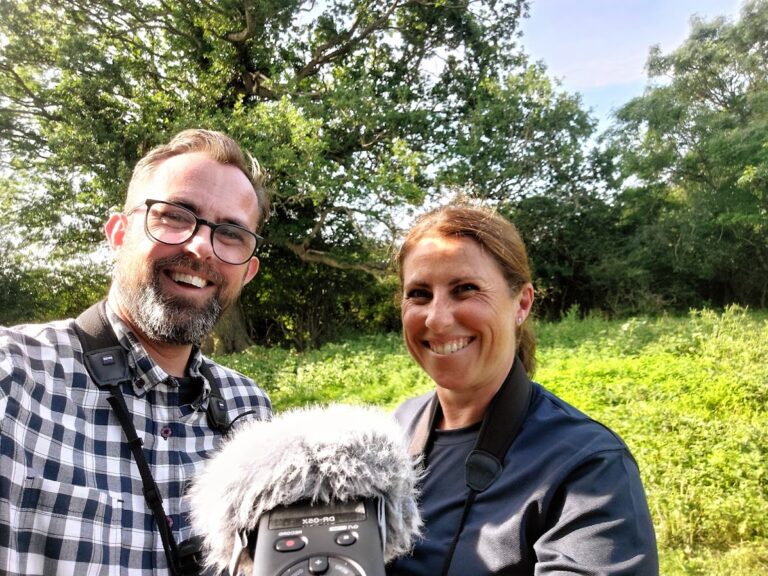
Episode 35: Queen of the Flies
Buckle yourselves in for episode 35 of the Knepp Wildland Podcast with the vivacious Erica McAlister, Principle Curator for Diptera and Siphonaptera (that’s flies and fleas to me and you) at the London Natural History Museum.
Erica has made it her life’s work to make flies cool – her enthusiasm has inspired so many people to love and value flies during her career. Erica teaches us a lot of new things about flies: we talk about twerking flies, egg-bombing flies, migratory flies, cheesey flies, desiccating flies, cryofreezing flies, and most importantly…how we wouldn’t have chocolate without flies.
Fly sample collections being made by Erica at Knepp Wildland through malaise trapping are providing some fascinating data through genome sequencing.
This episode may leave you with more questions that answers but you will certainly have some fun facts to share with your friends, and a new respect for flies.
Tags/collabs:
@sussex_emerald
@ericamcalister
@natural_history_museum
@hillwalkswithwillhawkes
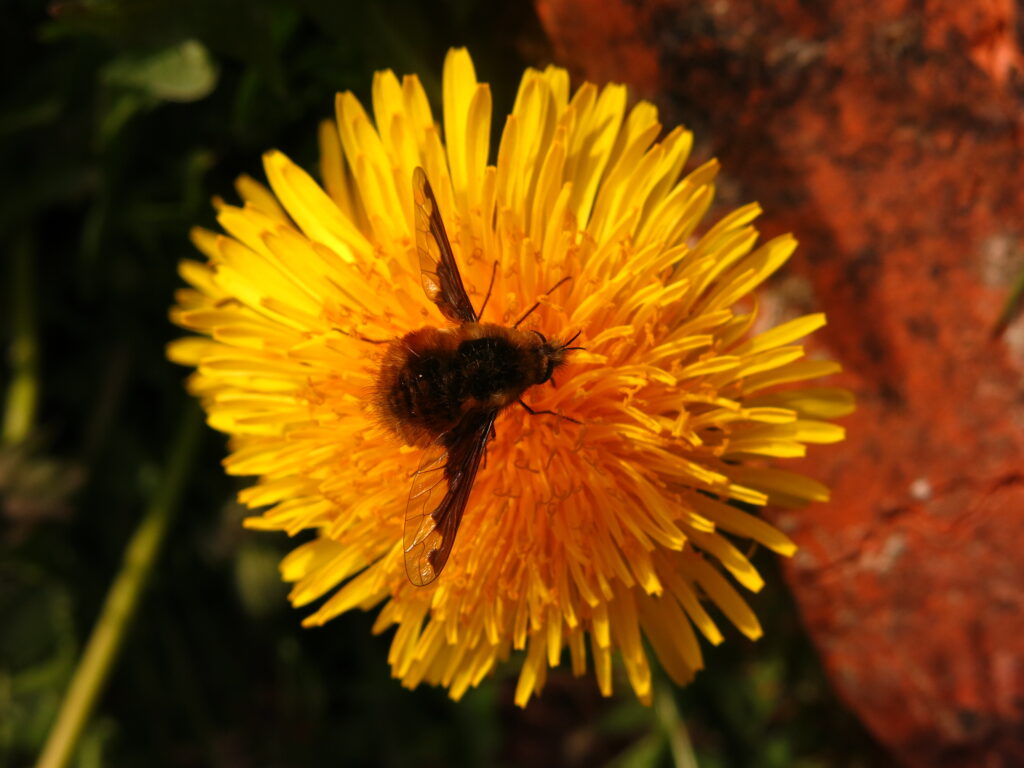
Episode 34: The Return of the Stork
It’s episode 34 of the Knepp Wildland Podcast and we return to the White Stork Project, five years on, to hear the latest news with White Stork Project Manager, Laura Vaughan-Hirsch.
We tune in to the live stork nest camera to check in on Ania and Bartek, a breeding pair bonded since 2020. We talk about this year’s nests and meet up with long-serving volunteer Silla to hear about what she does for the project and what the project means to her. We have a wander around the pen to visit some of the rehabilitated storks’ ingenious ground nests and Laura brings us up to speed on all the exciting news including the first successful return of a migrant bird and an announcement about the forthcoming inaugural Storrington White Stork and Nature Revival Festival coming in May 2025.
You can tune in to the live stork nest camera on YouTube here.
White Stork Project website.

Episode 33: Dam Good News for Beavers
In episode 33 of the Knepp Wildland Podcast we meet Knepp’s brilliant new Lead Ecologist, Matt Phelps. We chat about the exciting news, released just a few hours before, of wild release licencing for beavers and how this might affect the Knepp beaver family.
We discuss the abundance of Hawfinch here over the winter and speculate what opportunities are made available to them by the habitat that’s emerged from the rewilding here at Knepp.
As spring approaches, we talk about ongoing and upcoming surveys and how this has got Matt eager and ready to leap into the season ahead.
Episode 32: Ground Control to Ranger Tom
It’s episode 32 and we’re joined by Tom Burns, Knepp’s marvellous ranger and woodsman.
We learn what Tom gets up to in his daily work at the Knepp Rewilding Project – everything from managing the huge team of fab volunteers to managing the public rights of way across the estate. Not to mention collecting stork nesting materials from the coppice!
We spend most of our time, however, discussing Tom’s main passion and that is trees – ancient and veteran ones in particular, and why Knepp is so special for these old giants.
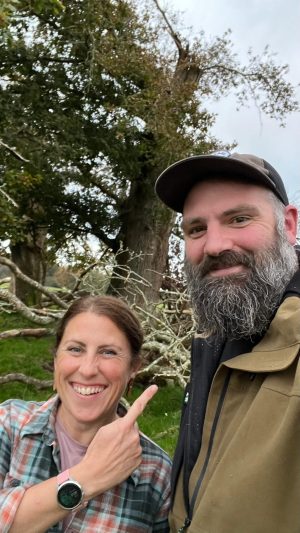
Episode 31: The Inoculated Boxes
Episode 30: The Beavers Revisited
It’s episode 30 so it’s time for a beaver project update! We’re joined again by national beaver specialist, and all-round good egg, Mark Elliott.

We talk about the progress of the Knepp beaver enclosure and its hard-working inhabitants, and what they’ve been up to since our last beaver podcast back in November 2022. Following a very wet winter and spring the robust beaver dams are holding up well and are helping to store a huge amount of water, slowing the flow in heavy rainfall events.
We explore what’s happening nationally and what big decisions need to be made as enclosed beaver families across the country are expanding.
For more information about beavers check out the Beaver Trust website. Did you know they have a fantastic podcast too? Listen here.
Episode 29: The Artists
It’s Episode 29 and we’re visiting the beaver pen with a gaggle of delightful artists who help us draw a different perspective on rewilding.

Led by the inimitable James Ort this collective is bringing rewilding to life through different mediums – clay and metal, watercolour, pencil and oil, freestyle stitching, printmaking, needlefelt and environmental art.


Podcast Episode 35 – The Return of the Stork
Home / Wildland Podcast
PODCAST EPISODE 35: QUEEN OF THE FLIES
Buckle yourselves in for episode 35 of the Knepp Wildland Podcast with the vivacious Erica McAlister, Principle Curator for Diptera and Siphonaptera (that’s flies and fleas to me and you) at the London Natural History Museum.
Erica has made it her life’s work to make flies cool – her enthusiasm has inspired so many people to love and value flies during her career. Erica teaches us a lot of new things about flies: we talk about twerking flies, egg-bombing flies, migratory flies, cheesey flies, desiccating flies, cryofreezing flies, and most importantly…how we wouldn’t have chocolate without flies.
Fly sample collections being made by Erica at Knepp Wildland through malaise trapping are providing some fascinating data through genome sequencing.
This episode may leave you with more questions that answers but you will certainly have some fun facts to share with your friends, and a new respect for flies.
Tags/collabs:
@sussex_emerald
@ericamcalister
@natural_history_museum
@hillwalkswithwillhawkes
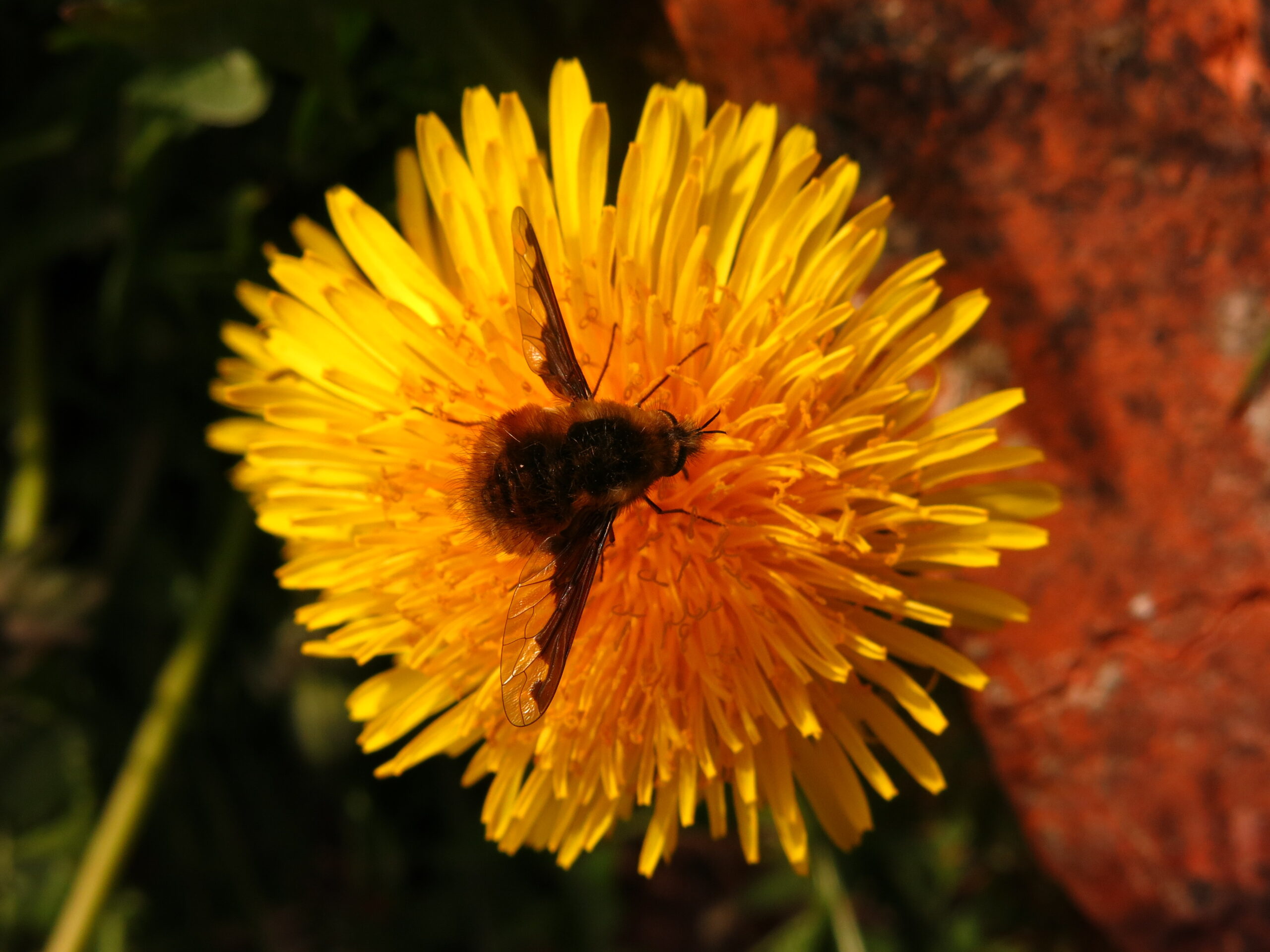
Podcast Episode 34 – The Return of the Stork
Home / Wildland Podcast
PODCAST EPISODE 34: THE RETURN OF THE STORK
It’s episode 34 of the Knepp Wildland Podcast and we return to the White Stork Project, five years on, to hear the latest news with White Stork Project Manager, Laura Vaughan-Hirsch.
We tune in to the live stork nest camera to check in on Ania and Bartek, a breeding pair bonded since 2020. We talk about this year’s nests and meet up with long-serving volunteer Silla to hear about what she does for the project and what the project means to her. We have a wander around the pen to visit some of the rehabilitated storks’ ingenious ground nests and Laura brings us up to speed on all the exciting news including the first successful return of a migrant bird and an announcement about the forthcoming inaugural Storrington White Stork and Nature Revival Festival coming in May 2025.
You can tune in to the live stork nest camera on youtube here:
White Stork Project website: https://whitestorkproject.org
Storrington White Stork and Nature Revival Festival: https://www.storrington.org.uk/event/storrington-stork-festival/
Podcast Episode 33 – Dam Good News for Beavers
In episode 33 of the Knepp Wildland Podcast we meet Knepp’s brilliant new Lead Ecologist, Matt Phelps. We chat about the exciting news, released just a few hours before, of wild release licencing for beavers and how this might affect the Knepp beaver family.
We discuss the abundance of Hawfinch here over the winter and speculate what opportunities are made available to them by the habitat that’s emerged from the rewilding here at Knepp.
As spring approaches, we talk about ongoing and upcoming surveys and how this has got Matt eager and ready to leap into the season ahead.
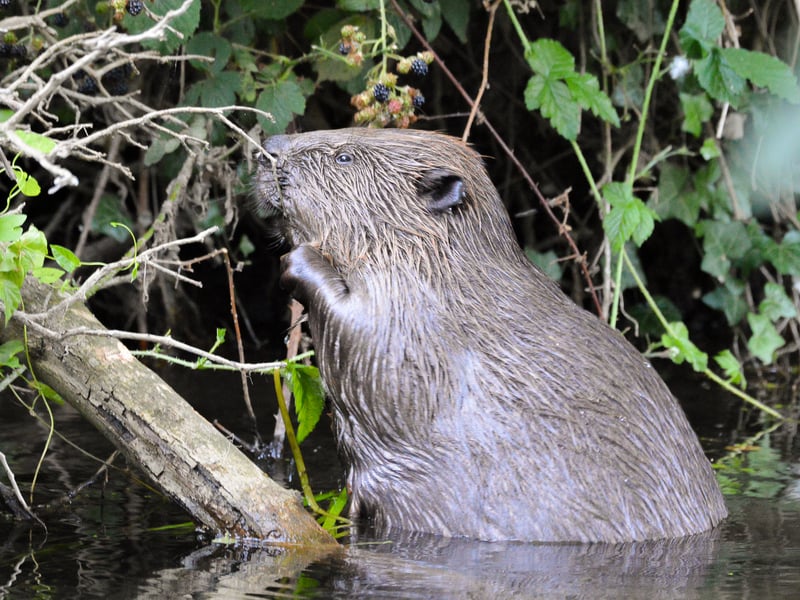
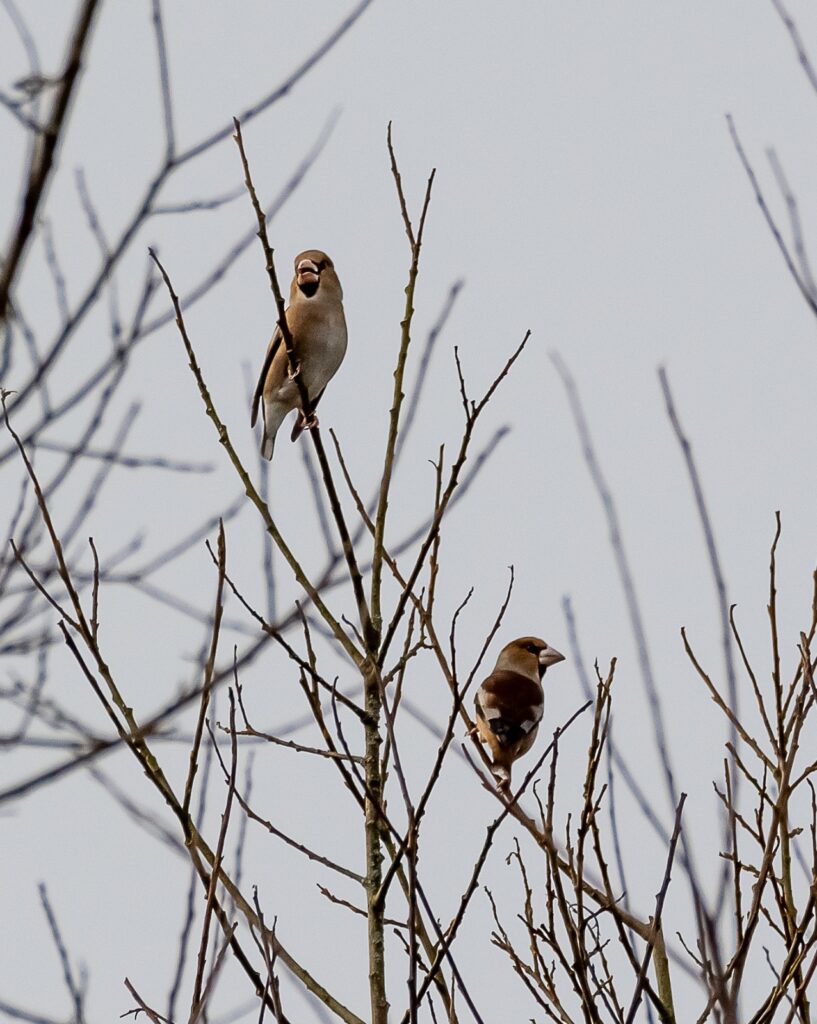
Photos by Matt Phelps
Podcast Episode 32: Ground Control to Ranger Tom
It’s episode 32 and we’re joined by Tom Burns, Knepp’s marvellous ranger and woodsman.
We learn what Tom gets up to in his daily work at the Knepp Rewilding Project – everything from managing the huge team of fab volunteers to managing the public rights of way across the estate. Not to mention collecting stork nesting materials from the coppice!
We spend most of our time, however, discussing Tom’s main passion and that is trees – ancient and veteran ones in particular, and why Knepp is so special for these old giants.
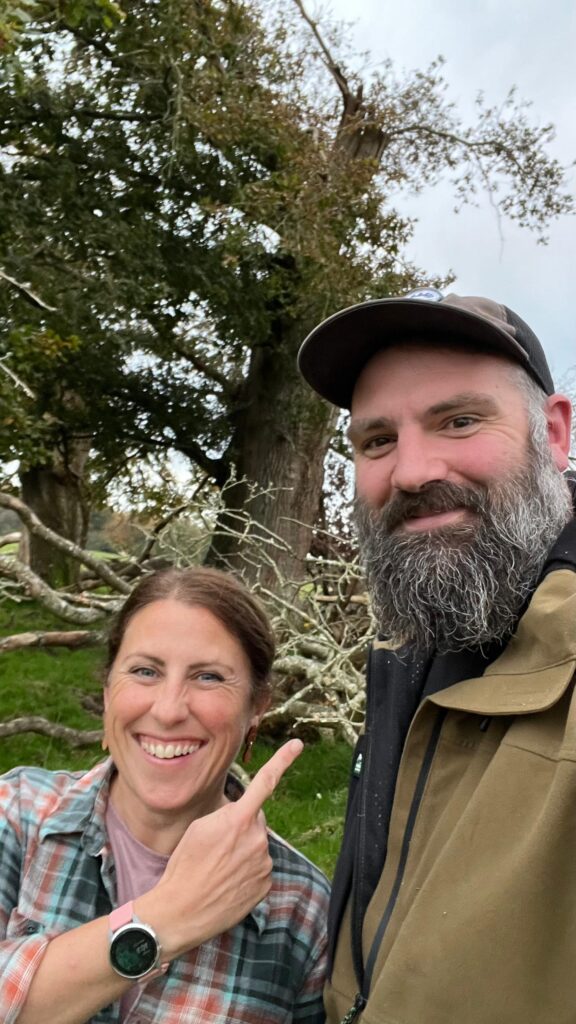
Episode 28: Wild Finca
Episode 28 of the Knepp Wildland Podcast transports us far away from Knepp and into the beautifully rugged landscape of Asturias in Spain. We’re visiting stunning Wild Finca to meet a family, inspired by Knepp, making a big change on their 13-hectare landholding.

They’re using local herbivore breeds, Asturcon horses and Casina cattle, to create a wildlife oasis and a place where people can be inspired to make positive changes for nature. We talk to Luke Massey about his exciting vision for this landscape, delving in to farming subsidies, wolves and education with a backdrop of croaking Nightingales, chirping crickets and the shrill call of the Black Woodpecker.


Take a look at the Wild Finca website for more information about this wonderful project, and how you can visit!
Listen here, or via your usual podcast provider:
Episode 27: The Ponds
Episode 27 of the Knepp Wildland Podcast finds us in the field with Rosie Moss from the wonderful Newt Conservation Partnership and Shaun Hancox, digger-driver extraordinaire! The Partnership have been harnessing funds from developers through the NatureSpace District Licensing Scheme to create high quality habitat for Great Crested Newt, and a whole host of other wetland species. We’re delighted to have recently had 12 impressive new ponds dug at Knepp through this scheme.
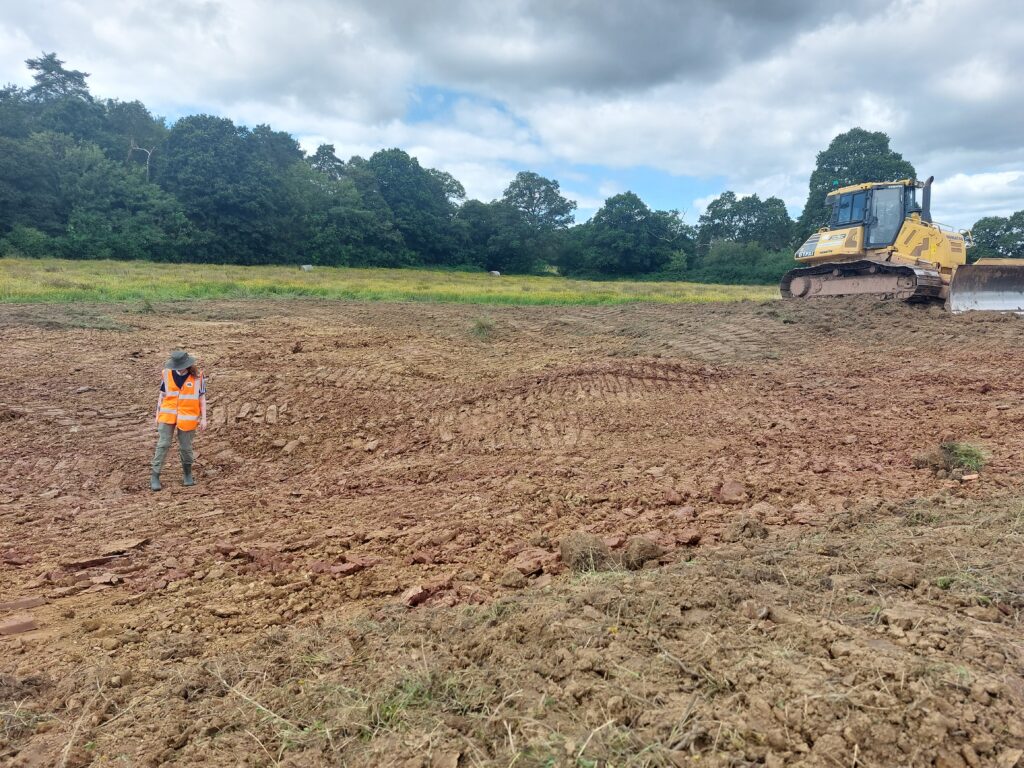
Tune in to hear about the new ponds at Knepp and the importance of ponds in our landscape, and to find out more about this crucial drive for the creation of more ponds. Large or small, and in their varying degrees of succession, ponds provide an essential habitat for both wildlife to thrive in and for us to enjoy!
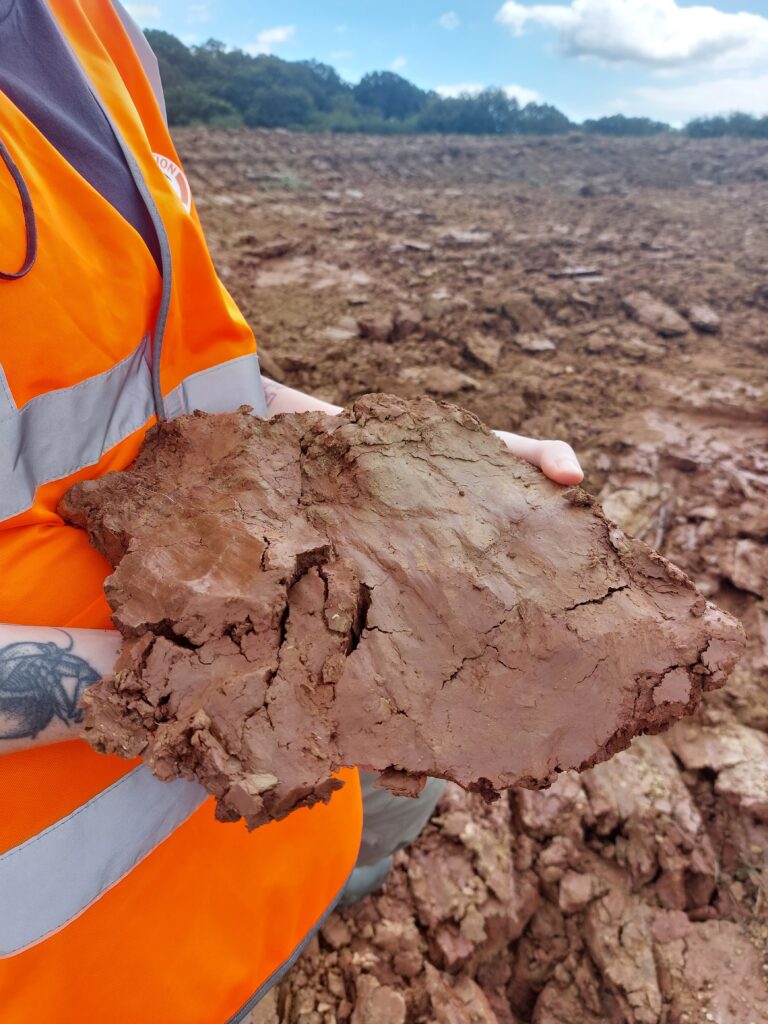

For more information about this marvellous project take a look at the Newt Conservation Partnership website
Read about the good work of the NatureSpace Partnership here
And please do have a look at the Amphibian and Reptile Conservation website too!
Episode 26: The Harvest Mouse
Episode 26 of the Knepp Wildland Podcast takes us on the trail of Micromys minutus, the harvest mouse. Knepp’s ecologist is joined by fellow mammal appreciators Ryan Greaves and Laurie Jackson to find out more about how these minute mice make a living at Knepp.
Weighing in at just six grammes this tiny Biodiversity Action Plan species seems to be in good numbers at Knepp, mostly concentrated in the habitats around the wetland areas. We talk about how to find their nests, what they feed on and their speedy life cycle. Join us as we set some traps at dusk and find out what we catch! Tune in on your favourite podcast provider.
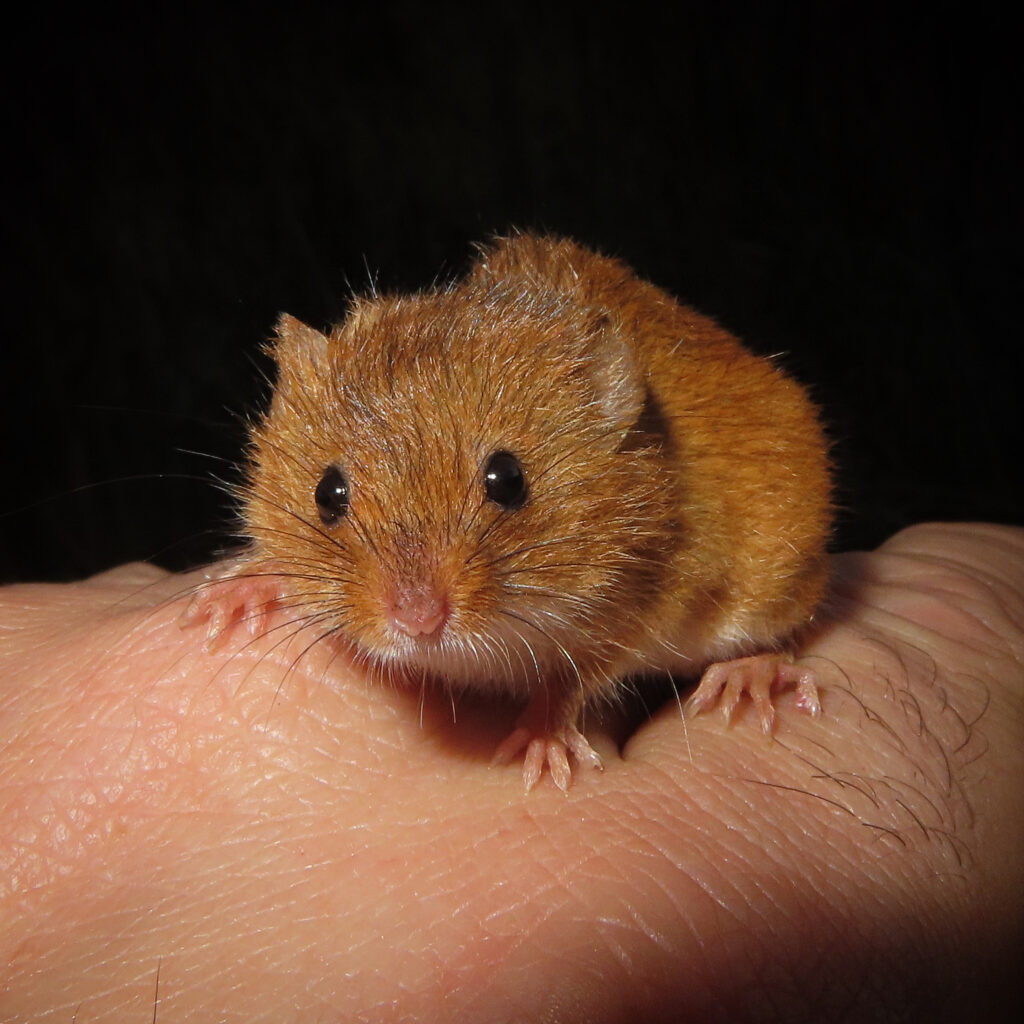


📷 Harvest mouse images by Ryan Greaves
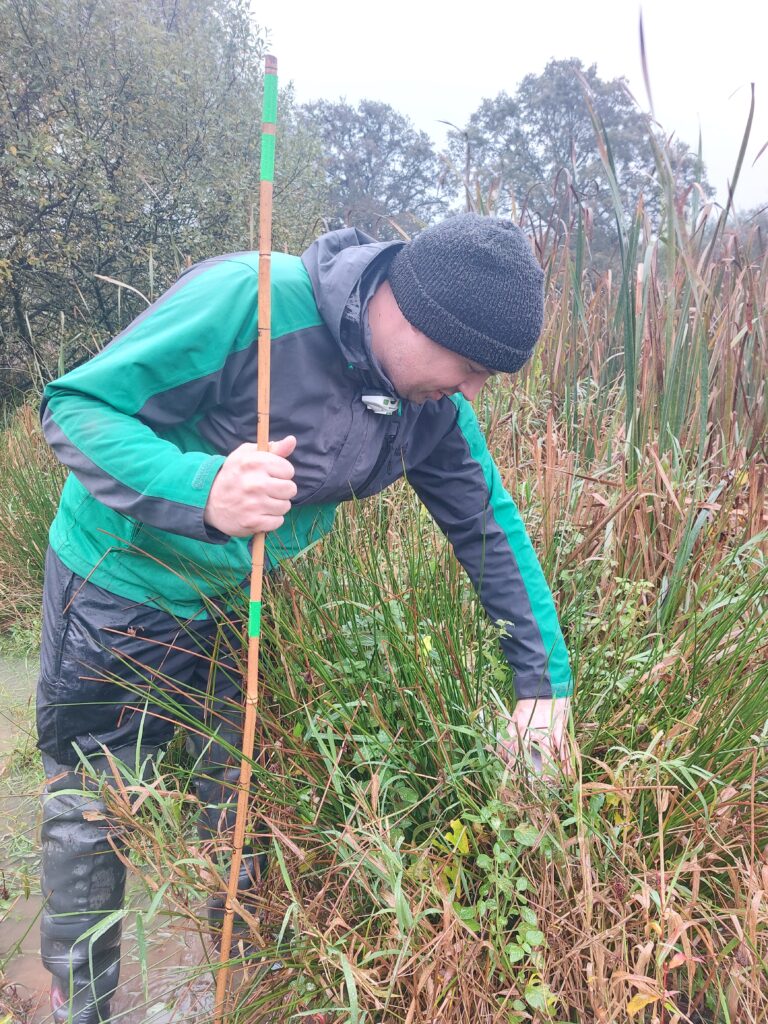


Ryan in the wetland checking traps; the Longworth trap and one of the cheeky field voles!
Episode 25: The Microclimate
Join us on episode 25 where we learn more about a ground-breaking microclimate project with Assistant Professor Rebecca Senior and PhD student Cameron Goodhead from Durham University.
They’re here at Knepp to investigate the microclimates provided by the complex structure of vegetation that has emerged through rewilding. A variety of remote data-loggers will be deployed in different vegetation structures and, combined with drone footage, LiDAR data and thermal images, will help to collect evidence to support nature-based solutions for climate change.



Episode 24: The Soundscape
In Episode 24 of the Knepp Wildland Podcast, we are joined by brilliant artist Hazel Reeves to hear how she has been inspired by the Knepp soundscape to extend her artistic practice beyond her studio.
Hours before many of our alarms go off, Hazel can be found sitting quietly in the Knepp Wildland, taking sound recordings of the dawn chorus and one of her favourite birds in particular: the Nightingale.
We talk about aberrant Nightingale songs, the joy of clattering White Stork bills, and how soundscape ecology can give us hope as we hear how the health of a landscape can be detected through the richness of sound.
To keep up to date with Hazel’s work and wildlife sound recordings, check out her website: www.hazelreeves.com and follow her on Instagram @hazelreevessculptor

Nightingale Bite-size
To celebrate 10,000 downloads of our first ever episode, The Nightingale, we’re delighted to be able to offer you a bite-size version of it!
Many thanks indeed go to Rob Burns for distilling the magical essence of the Nightingale in to a short podcast. Enjoy!

Episode 23: The Archaeologists
It’s episode 23 and we are taking a blustery walk with some fascinating researchers from Oxford Archaeology and Historic England… we are stepping back in time! We discuss an innovative and collaborative research project called ‘Rewilding Later Prehistory’ exploring Bronze Age and Iron Age ecology from around 4,500yrs ago to 2,000yrs ago.
Where the focus of this period is usually based around human progress, this project aims to discover more about the wildlife that would have been found in our landscape around this time. From this research the hope is that we can use archaeology to link in with current nature recovery practices – thinking about restoring landscapes and bringing back lost species.
For more information about the project take a look at the project page here: https://rewilding.oxfordarchaeology.com/

Episode 22: The Beaver
It’s a wet and wild episode 22! We’re joined by national beaver specialist, Mark Elliott, down in the Knepp beaver pen after a night of heavy rain. We marvel at the amazing work of the beavers – how they’re creating the most wonderful wetland area that’s holding on to water during winter floods and providing an oasis for life during droughts.
We tap into Mark’s encyclopaedic knowledge of the natural history of beavers in Britain: why they became extinct, how they’re making an incredible come-back and the amazing benefits they bring to wildlife and us humans too.
For more information about beavers check out our website: https://knepp.co.uk/rewilding/reintroductions/beavers/ and the Beaver Trust website https://beavertrust.org/



Episode 21: The Youth Rewilding Summit
Episode 21 finds us at the inaugural Resurgence Youth Rewilding Summit held at Knepp in September 2022. Organised in a wonderful collaboration with Knepp Wildland Foundation https://www.kneppwildlandfoundation.org/, Heal Rewilding https://www.healrewilding.org.uk/ and Young Wilders https://www.youngwilders.org/
The event was created by young people to connect and inspire other young people with a passion for rewilding, and to give the next generation of rewilders a platform and an opportunity to drive change.
Join us to hear more about the day from the people involved in organising it and some of the enthusiastic bunch who came along for the day.
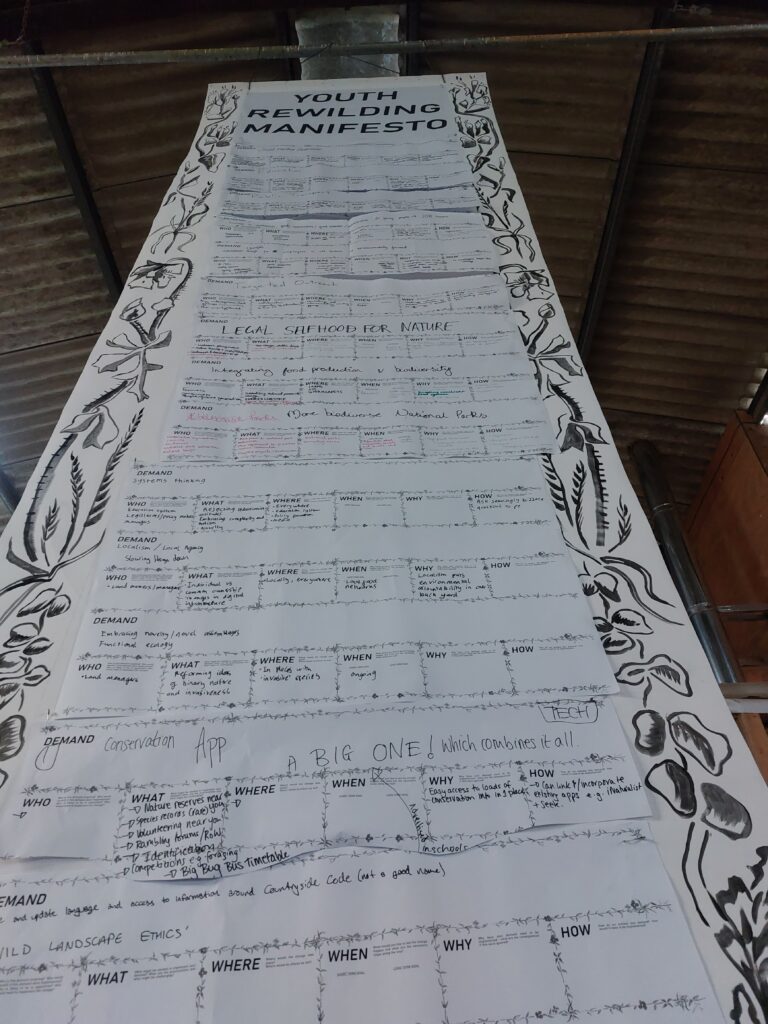


Episode 20: The Cuckoo
This episode takes us on an early morning mission to catch a cuckoo or two with the brilliant Lee Barber, from the British Trust for Ornithology
With a special net configuration and lure set up to entice the birds in, we waited like coiled springs to jump in to action if we saw one come into the nets.
Tune in to hear if we were successful (we may have struck lucky otherwise this would have been a very short podcast!) and to learn more about this African migrant’s story, and why satellite tagging contributes to integral research to learn more about why these long-distance migrants are facing difficulty on their journeys.
To track satellite-tagged cuckoos check out the BTO’s brilliant website: https://www.bto.org/cuckoos
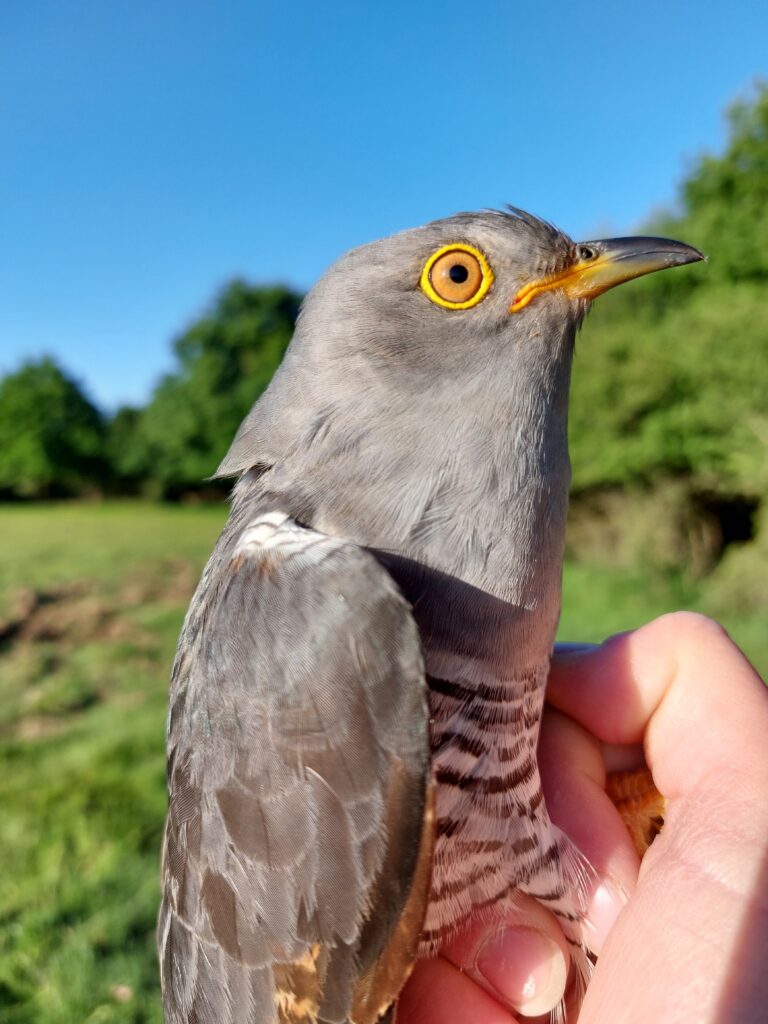


Podcast Episode 19: The Rewilded Garden
Episode 19 of the Knepp Wildland Podcast finds us in a newly rewilded location at Knepp – the garden!
Charlie Harpur, Suzi Turner and Moy Fierheller are our keystone species, or garden team, in the 1.3-acre Victorian walled garden and have kick-started natural processes to make the garden more sustainable and buzz with biodiversity. We talk about how this horticultural experiment is challenging traditional gardening and how we can all do something to rewild our gardens and window boxes too.
If you’d like to learn more about the ongoing journey of rewilding the Walled Garden, please take a look at this webpage and Moy’s wonderful blog.


Podcast Episode 18: The Earthworm
It’s episode 18 so it’s about time we go underground, delving well below the surface to unearth the life cycle of a rather brilliant ecosystem engineer: the earthworm. We join a survey session at Knepp with four brilliant scientists: Emma Sherlock from the Natural History Museum, Inez Januszczak and Chris Fletcher from the Darwin Tree of Life Project, and Keiron Brown from the Field Studies Council. They teach us about the different groups, or eco-types, of worms; how they recover in rewilded landscapes; and how they are quite picky when on the look-out for a mate.
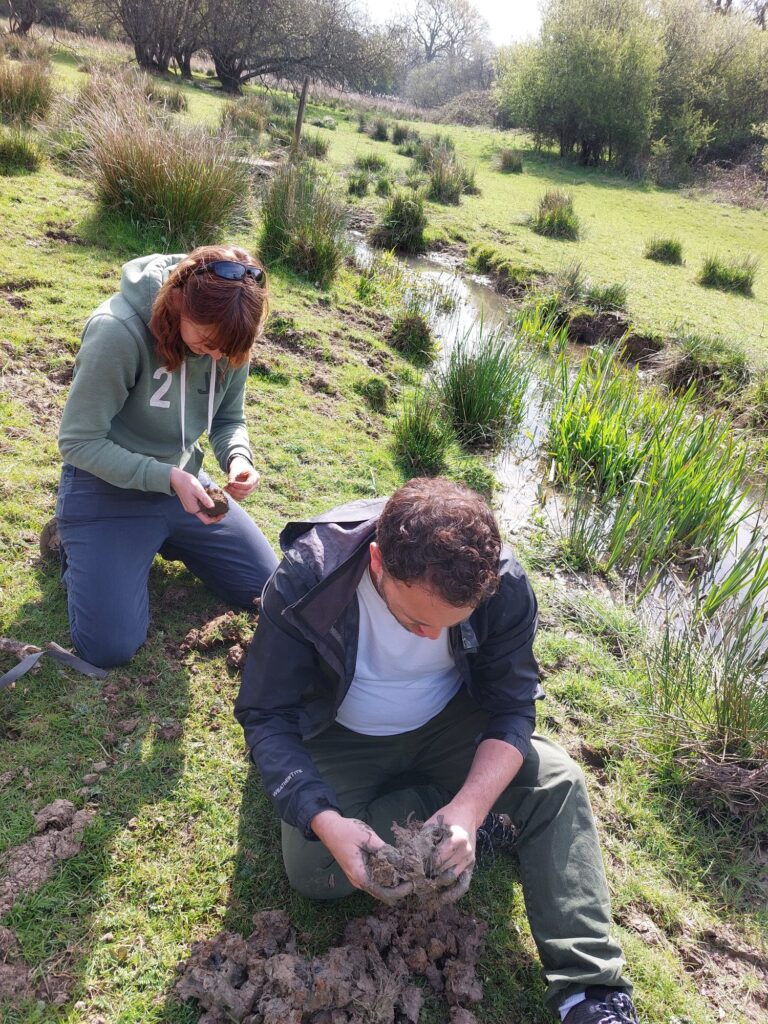

To learn more about earthworms, and what can be done to help them in your garden, check out the Earthworm Society of Britain website which is full of fantastic resources.
And for more information about the amazing work of the Darwin Tree of Life project take a peek here.
Many thanks go to Richard Durrant for allowing us to have his ‘Big Fat Earth Worm’ song at the end of the podcast – we couldn’t have picked a more appropriate song!
Podcast Episode 17: The Rainbow Chaser
Episode 17 takes me and my brilliant team-mate, Ivan de Klee, outside of the Knepp Estate boundaries. Ivan is our rainbow chaser and helps us imagine what a wilder landscape might look like as we explore the idea of the Weald to Waves corridor. We talk about how such collaborative landscape scale projects, and new rewilding projects, could be funded by new agri-environment schemes, biodiversity net gain and carbon sequestration – and how these markets might work. Ivan explains what natural capital is and how rewarding landowners for ecosystem services, such a biodiversity and soil restoration, could pave the future for nature conservation in the UK.


For more information about the wonderful Weald to Waves project please visit this website and for more information about rewilding projects and networks across Britain, take a look at the brilliant Rewilding Britain website.
Podcast Episode 16: The Scrubland with Isabella Tree
Isabella Tree is joint owner of Knepp, and author of the best-seller Wilding book, and has been a long-awaited guest on the podcast. In episode 16 Issy and I go for a lovely wintery walk and chinwag in the scrubland, where we talk about the importance of scrub for wildlife. We explore many facets of the scrub, including the influence of the large herbivores, ‘Vera’ oak saplings, the role of the Jay and what the Knepp landscape might look like in the future. The hot topic of tree-planting comes up, as does the local development that’s been proposed on Knepp’s neighbouring land.

Podcast Episode 15: The Regenerative Farm
It’s episode 15 and we’re exploring a different part of the Knepp Estate! Join me as I find out more about our new regenerative farm from farm manager Russ Carrington. We visit the grazing herd of Sussex cattle, learn about mob-grazing and NoFence collars, and talk about the plans for this exciting new venture sitting alongside the Knepp Rewilding Project.



For more information about the Knepp regenerative farm project follow Russ on Twitter @CiderRuss and the Knepp Regen Farm on Instagram @KneppRegenFarms
You might also be interested in reading more about Groundswell to learn more about regen farming, and if you’ve got a soft spot for dung beetles, check out these brilliant people: Dung Beetles for Farmers @DungBeetleFarms
Podcast Episode 14: The Tree-corer
Join Matt Wainhouse, Geoff Liddell and myself as we take a deep dive in to one of Knepp’s magnificent oak trees. Matt is an ecologist undertaking a PhD in the ecology and conservation of heart-rot fungi, investigating how communities of fungi assemble in living trees, linking in with their function as ecosystem engineers. With the aid of a tree-corer, and Matt’s in-depth knowledge, we learn a lot more about what’s going on with fungi inside the tree, and not just from the fruiting bodies on the outside of the tree. Apologies for the mobile phone interference in the middle of the podcast.
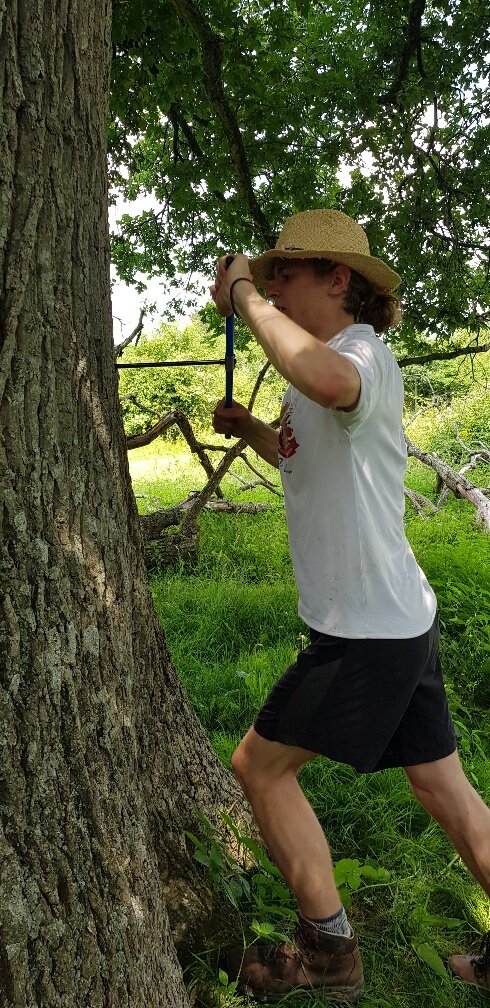



Matt, a fanatical naturalist and botanist in origin, became increasingly obsessed with the mystery of Kingdom Fungi leading him to jack in his day job to study it. Matt is a Principal Ecologist advising on habitat creation, biodiversity net-gain and natural capital. He is a Winston Churchill Fellow researching how international approaches to fungal conservation can be applied to the UK planning system.
Oxford grad and all-round clever-clogs engineer, Geoff Liddell, is more than just side-kick. He’s a ska-skanking, fungi fanatic in a faux-fur coat. This superstar environmentalist and enthusiastic naturalist knows more about leaf hydraulics than your nan does about lavender-scented chintz linen. And you should see him turn the increment bore. Phwoaarr!!!!
Follow Matt on Twitter on @FungiandFlora to keep up to date with what he’s up to.
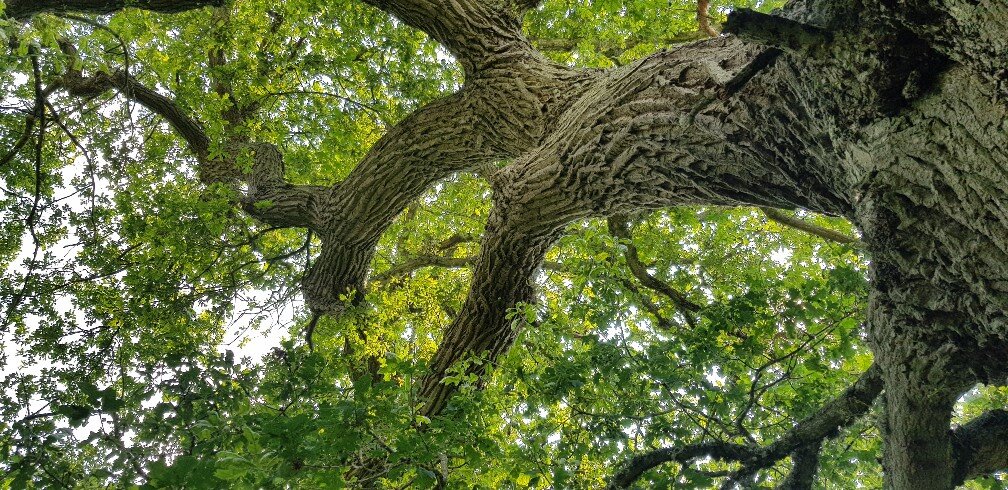
Podcast Episode 13: The Dawn Chorus
Episode 13 finds us at Knepp Wildland at dawn, which is a pretty early start in the middle of May! I’m joined by Sideshow Dave to find some of the star songsters of the Wildland; we listen out for our iconic bird species and enjoy listening to their songs, we talk about some of the successes of the scrub but also some of the bird species we are now missing from our landscape and what sounds they would have bought to the dawn chorus in the past.
This podcast wouldn’t have been possible without the support of some very talented people so many thanks go to: Lia Brazier for the beautiful artwork, Mat Davidson for the wonderful music and the fantastic Ian Bunn for his patient editing skills. Huge thanks go to Sideshow Dave, of course, for his unwavering enthusiasm and support.

Podcast Episode 12: The Purple Emperor Update
Episode 12 is a bonus episode with Matthew Oates. A visit from Matthew in early June meant we could take this opportunity to have a catch-up about the forthcoming Purple Emperor season, weird weather and what our summer butterfly season might look like!
We’ve had well over 30,000 downloads now, and are hugely grateful for all your support, so thanks for listening, sharing, rating and supporting us!
This podcast wouldn’t have been possible without the support of some very talented people so many thanks go to: Lia Brazier for the beautiful artwork, Mat Davidson for the wonderful music and the fantastic Ian Bunn for his patient editing skills.
For more information about Matthew and his publications please take a look at his website
Follow Matthew on Twitter @MatthewOates76
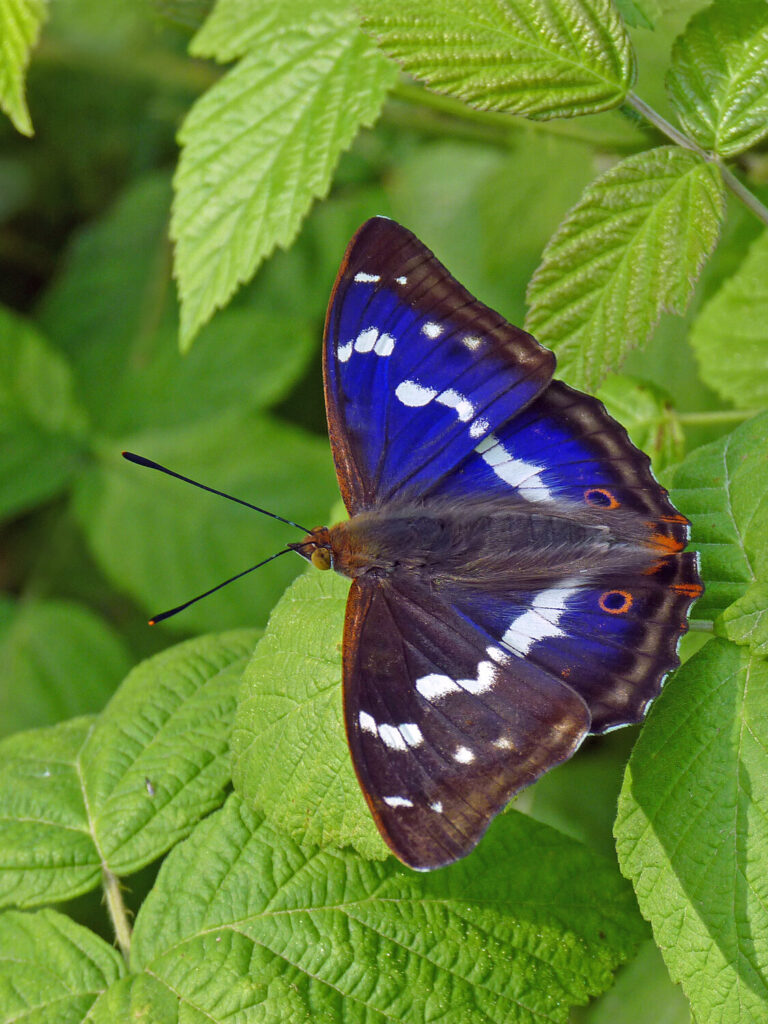
Podcast Episode 11: The Orange-tip
Episode 11 finds us on a bright spring day sitting by a stream with Matthew Oates. Matthew, a remarkable field naturalist and author, has spent his lockdown winter dreaming of springtime at Knepp and the first glimpse he might have of the exotic-looking orange-tip butterfly. We talk about this heart-lifting harbinger of spring, its life-cycle and foodplants, and why Matthew would pick the orange-tip over gramophone records as a desert island companion.
This podcast wouldn’t have been possible without the support of some very talented people so many thanks go to: Lia Brazier for the beautiful artwork, Mat Davidson for the wonderful music and the fantastic Ian Bunn for his patient editing skills.
And huge thanks, of course, to Matthew himself, with whom I never stop learning.
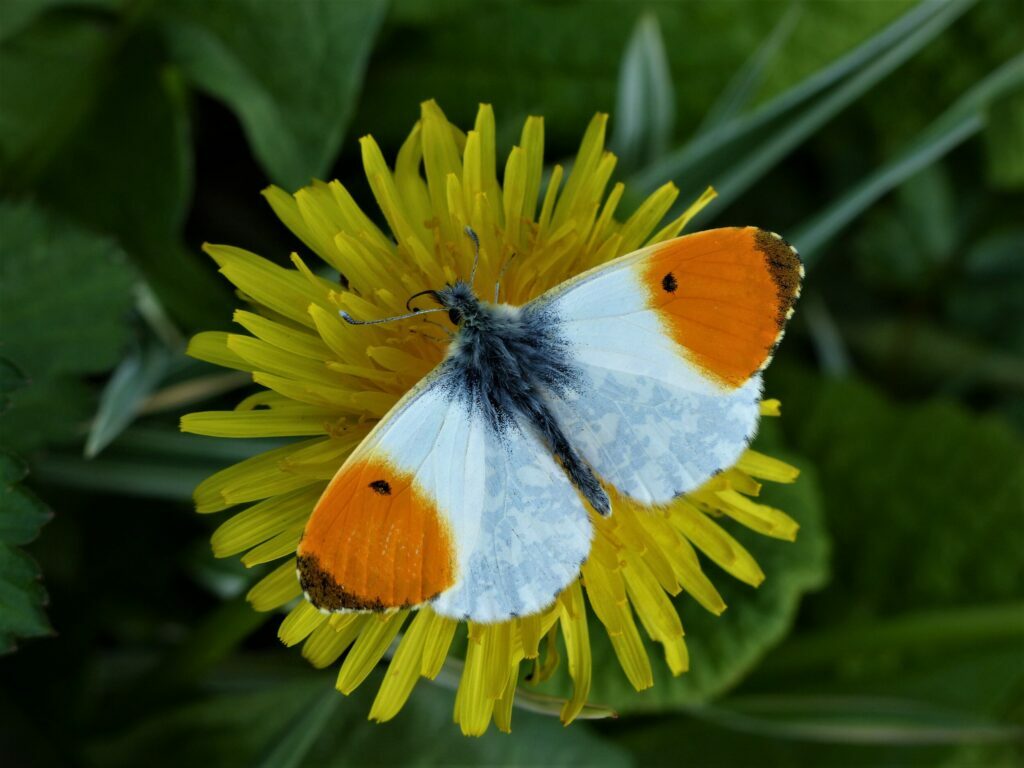

Left: orange-tip male with his beautiful orange flashes. Right: orange-tip female and her snow-white wings. Images copyright: Matthew Oates.
For more information about Matthew and his publications please take a look at his website
Follow Matthew on Twitter @MatthewOates76
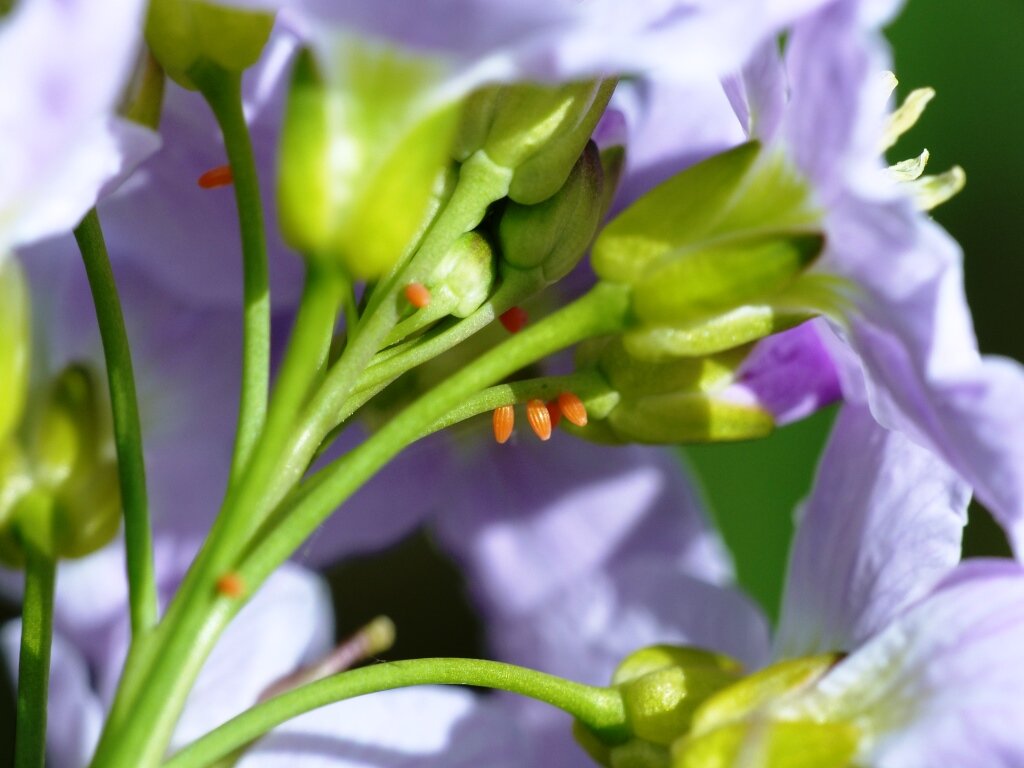


Left to right: pretty orange-tip eggs on cuckooflower; an orange-tip larvae; an orange-tip chrysalis. Images copyright: Matthew Oates.
Podcast Episode 10: The Stockman
Episode 10 finds us in the rewilding project at springtime during our old English longhorn cattle calving season, with Knepp’s splendid stockman, Patrick Toe. We discuss everything from habitat creation and animal behaviour to dung, cattle round-ups and animal health. And Pat’s desire for a big ship’s bell.
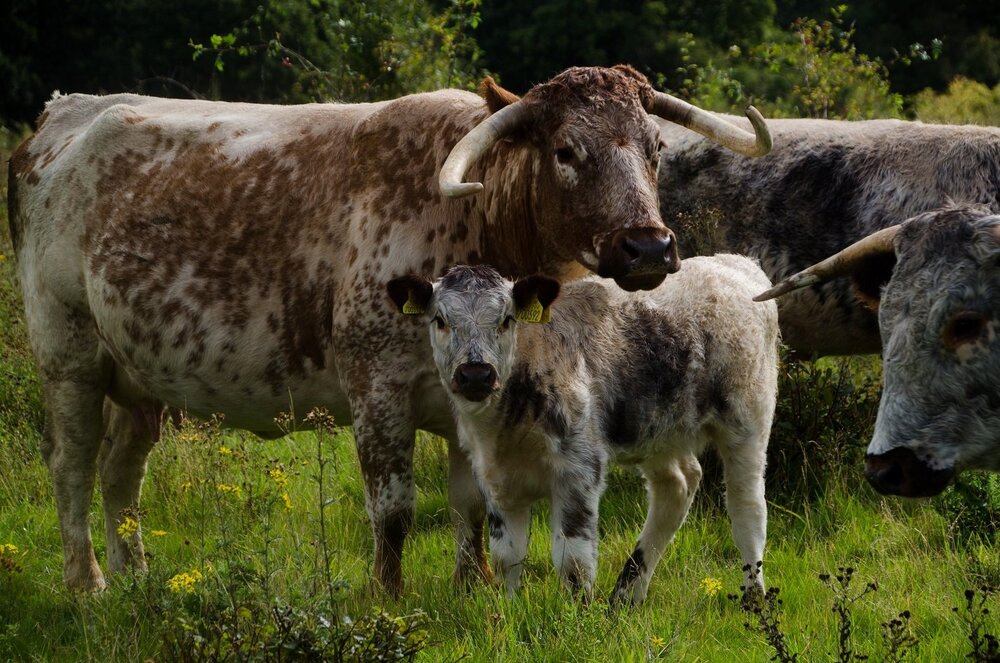


For more information about the old English longhorn as an important herbivore at the Knepp Rewilding Project please visit our website.
If you’ve not tried our delicious Knepp Wild Range meat before, do take a look at our website where you can place your order. When you are enjoying your slow-grown organic, pasture-fed meat you are contributing to a landscape that is rich in wildlife and, most importantly, the Pat happy-o-meter. If Pat is happy then the cows are happy too!
Huge thanks go to Pat for taking time out of his busy calving season to talk to us about his beloved herds. This podcast wouldn’t have been possible without the support of some very talented people so many thanks go to: Lia Brazier for the beautiful artwork, Mat Davidson for the wonderful music and the fantastic Ian Bunn for his patient editing skills. And many thanks, as always, go to Sideshow Dave for his ideas, support and ongoing enthusiasm!
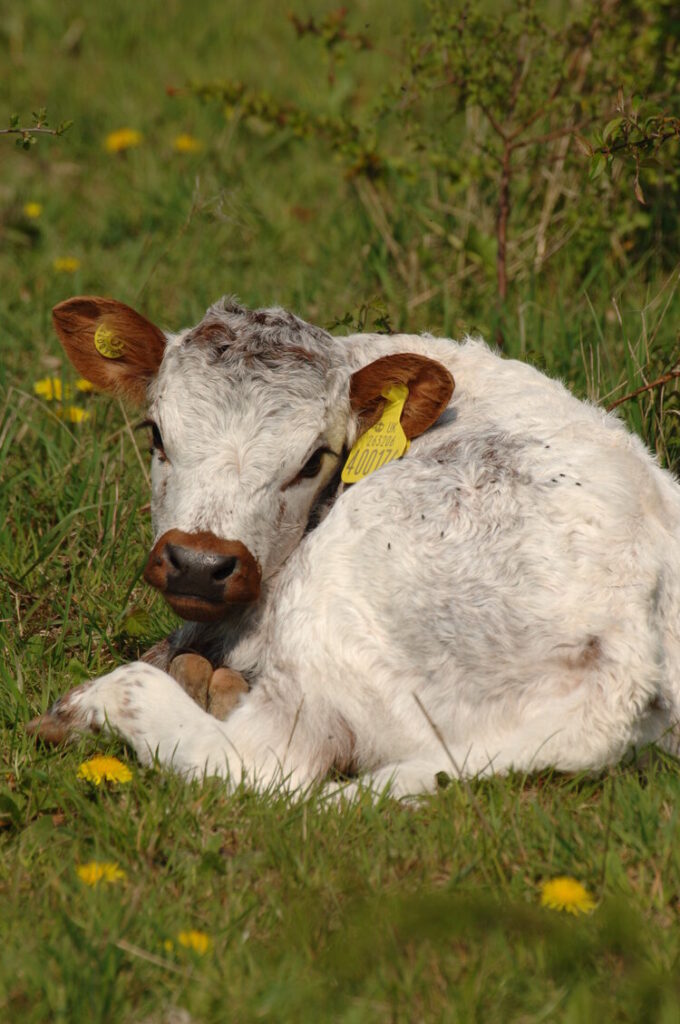

Podcast Episode 9: The Musician
Episode 9 brings us something a little bit different to usual as we meet an incredibly wild musician! Richard Durrant has drawn inspiration from Knepp and his love of nature to create his latest album ‘Rewilding’ which includes bird song recorded at Knepp.
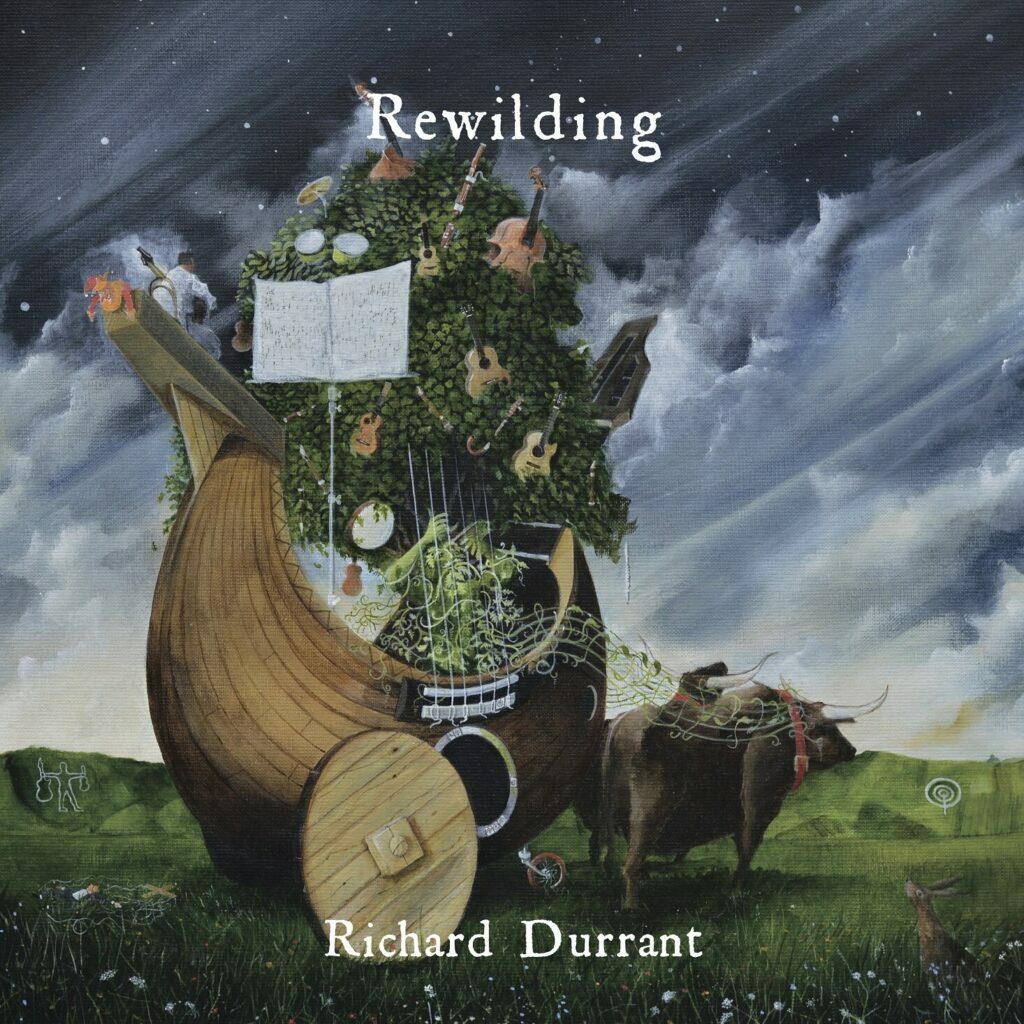
It all started with a duet between Richard, playing his 5,000-year-old bog oak guitar, and a nightingale in a Knepp hedgerow and has resulted in a beautiful album which celebrates the return of nature both above and below ground.
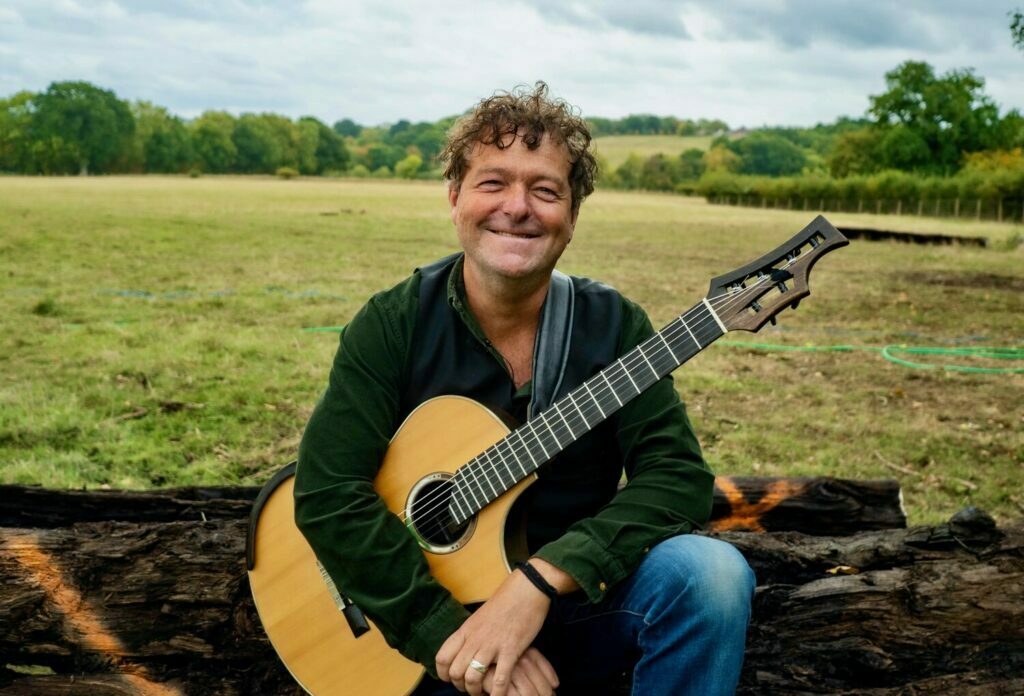
Visit Richard’s website for more information about gigs, forthcoming live online events and his music academy, check out his excellent YouTube channel, and for an uplifting feed do follow him on Twitter and Facebook.
This podcast wouldn’t have been possible without the support of some very talented people so many thanks go to: Lia Brazier for the beautiful podcast artwork, Richard Durrant for his wonderful music (including the intro/outro music this time!) and the fantastic Ian Bunn for his super editing skills.
Podcast Episode 8: The Lock-down Round-up
It’s Episode 8 and I’m joined by Side-show Dave! We go ringing at a noisy redwing roost in the Wildland scrub, and back at home we enjoy a glass of wine and reflect on some of the marvellous wildlife encounters we’ve had at Knepp in 2020. Tune in for a relaxing bit of blethering as we take stock of the crazy year that was 2020 and share how Knepp provided an oasis in our landscape for wildlife and people alike. We bounce from feathery house martin feet to damselfly roosts that look like fairy lights, and from the night of the living eel to a Belgian-ringed fieldfare!
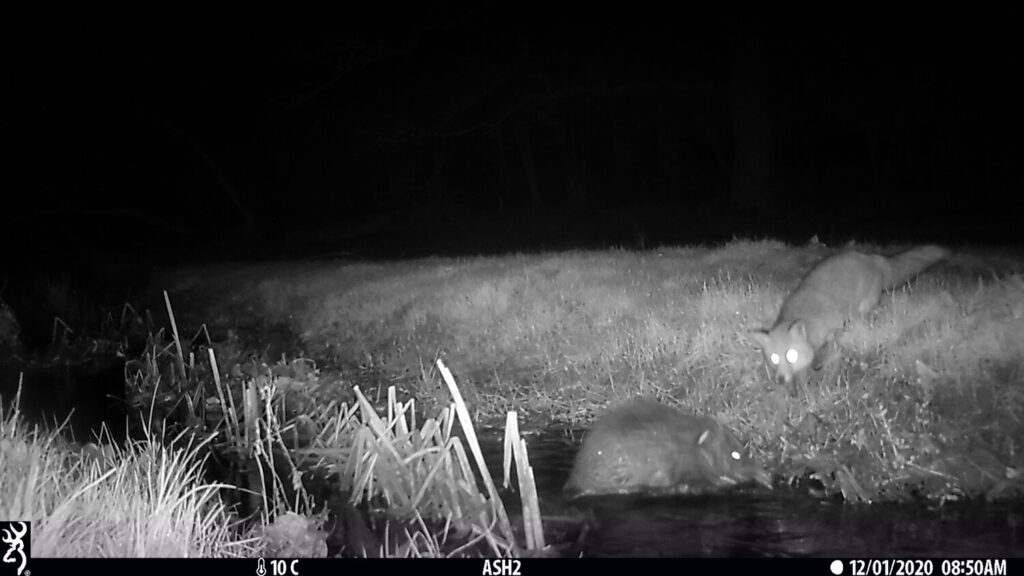
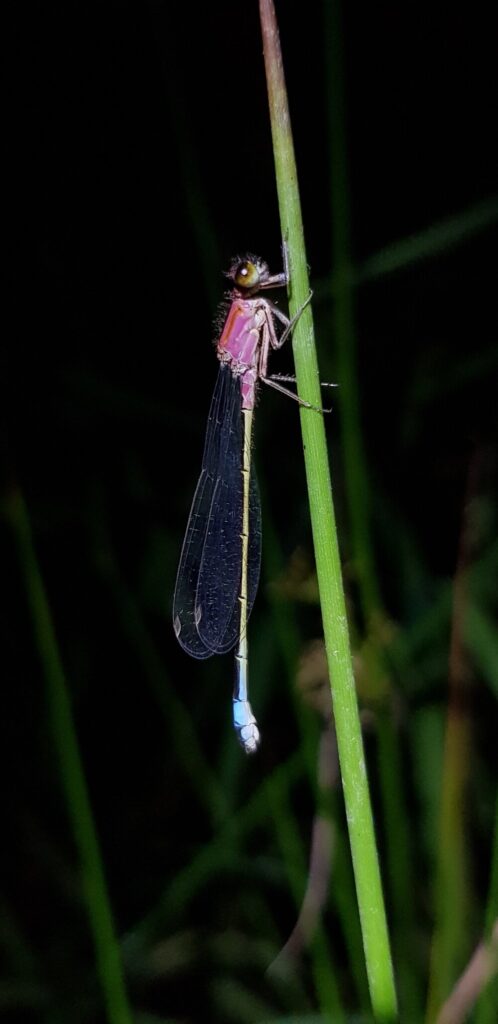


Blue-tailed damselfly roost at the Hammer Pond
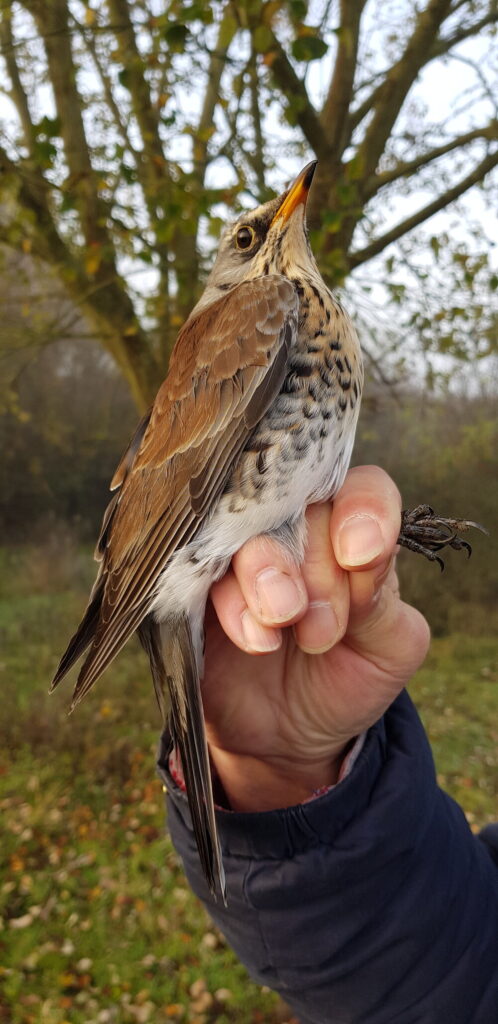

A Belgian-ringed fieldfare and a feathery house martin foot!
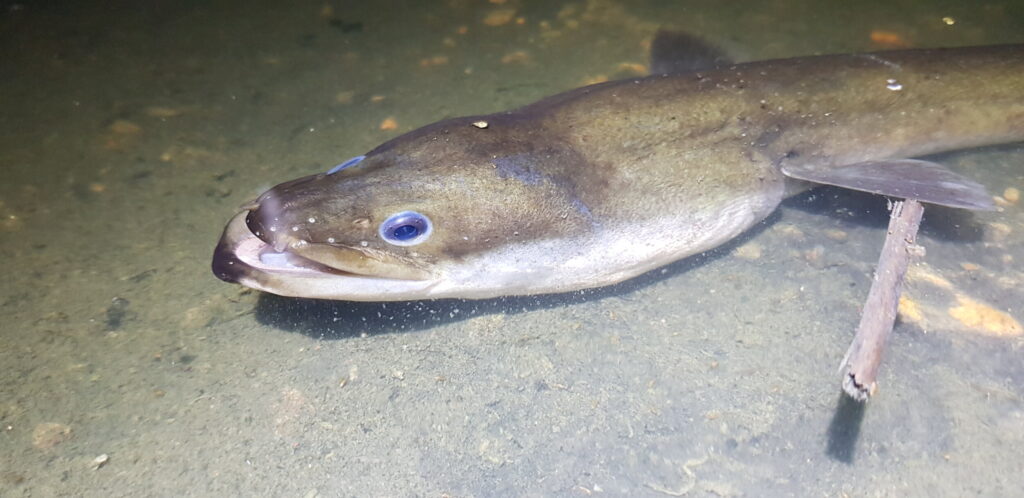

One of the huge eels we saw at the Hammer Pond and a water stick insect
This podcast wouldn’t have been possible without the support of some very talented people so many thanks go to: Lia Brazier for the beautiful artwork, Mat Davidson for the wonderful music and the fantastic Ian Bunn for his super editing skills.
Episode 7: The Fallow Deer
Episode 7 takes us back in time as we learn about fallow deer: what their ancestors would have looked like and how they would have behaved. We also enjoy some of the sounds that we hear at Knepp Wildland during present day, as we take a front row seat at the deer rut lek, a display ground where the bucks (males) show off their impressive bellowing and scenting to onlooking does (females). We watch the deer in the woodland through a thermal imaging camera to see what they’re really getting up to when we can’t see them.
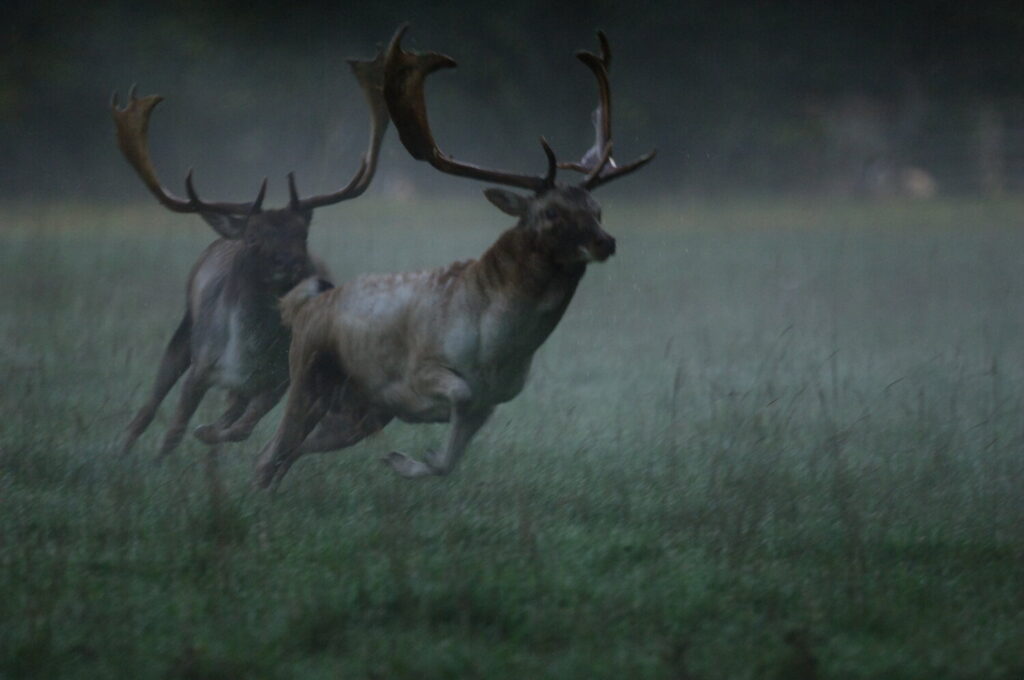
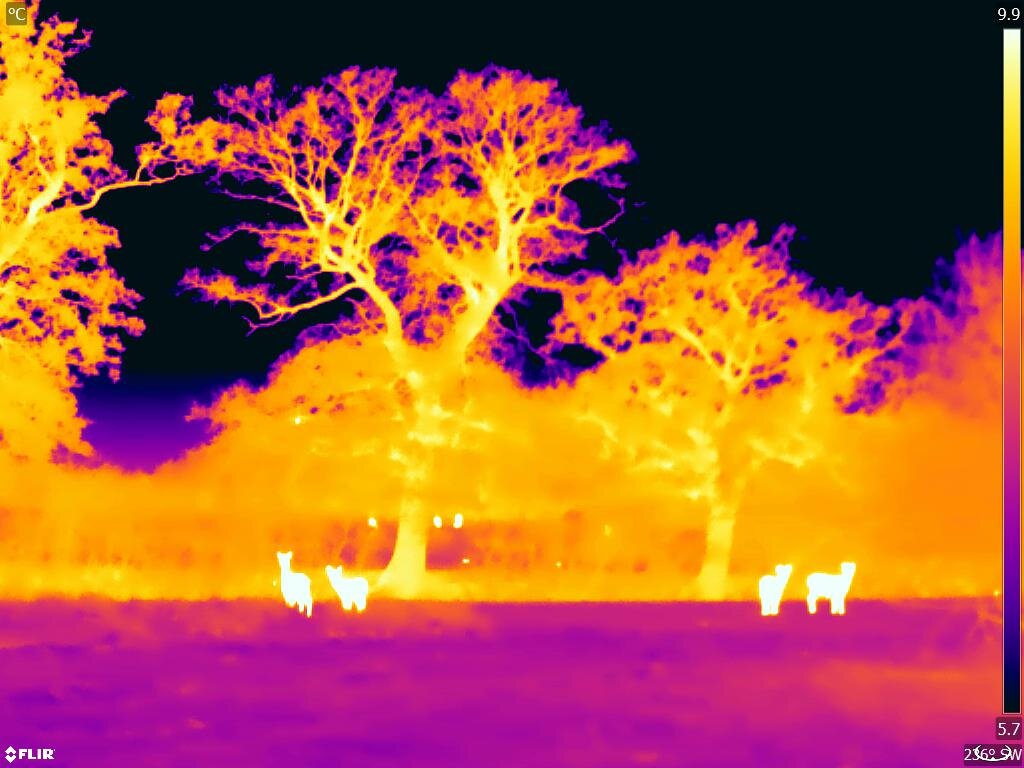
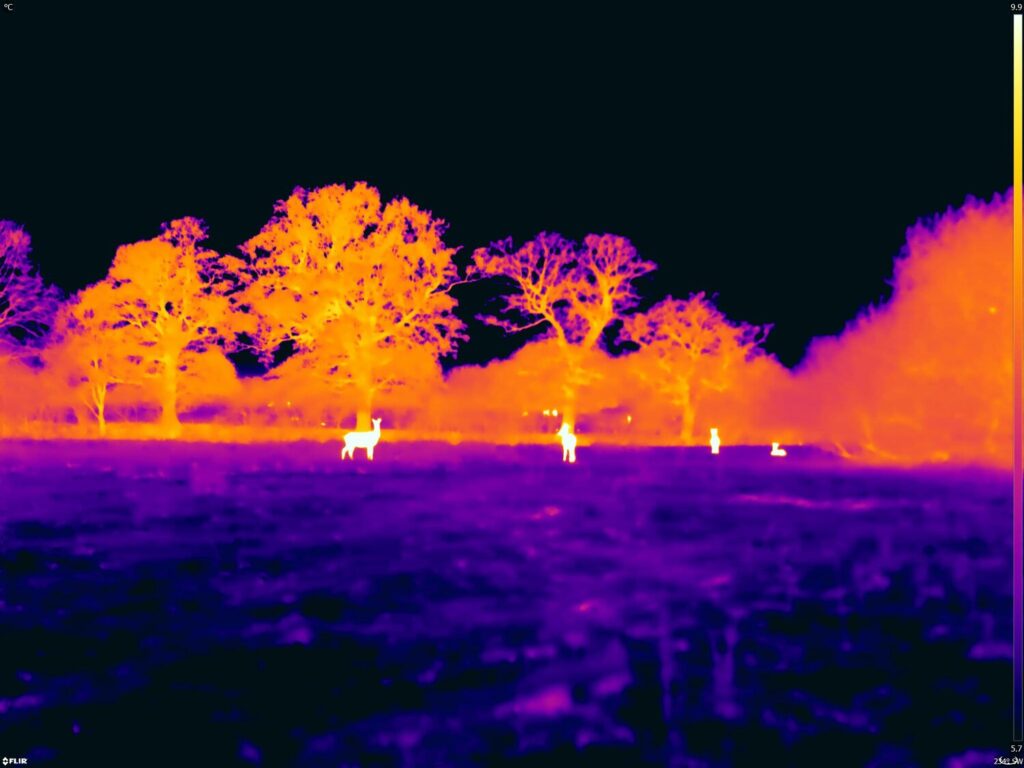
Many thanks to Mollie Mills for sharing her experience of paleobiology, Darren Rolfe for his knowledge about the Knepp fallow deer and to Sideshow Dave for his technical support and enthusiasm for exploring nature in unusual ways…
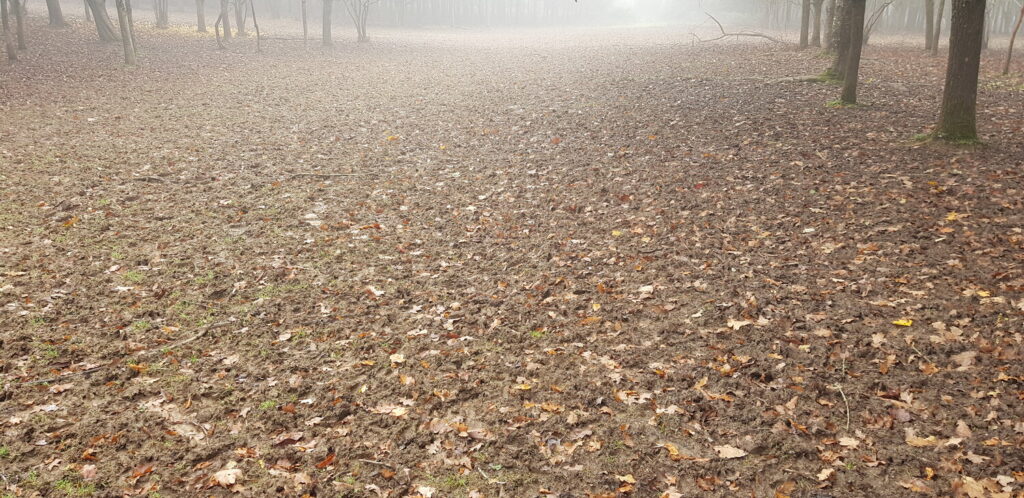
This podcast wouldn’t have been possible without the support of some very talented people so many thanks go to: Lia Brazier for the beautiful artwork, Mat Davidson for the wonderful music and the fantastic Ian Bunn for his patient editing skills.
Podcast Episode 6: The Dung Beetles
Our sixth episode is dedicated to some of the world’s most wonderful ecosystem engineers: dung beetles. As well as being funky little insects they punch well above their weight in the ecosystem services they provide. I join scarab fanatics Darren & Ceri Mann as they delve in to some Knepp dung, and chat to Rob Howe, a livestock vet who is working with farmers to promote healthy on-farm ecology through the power of dung beetles.
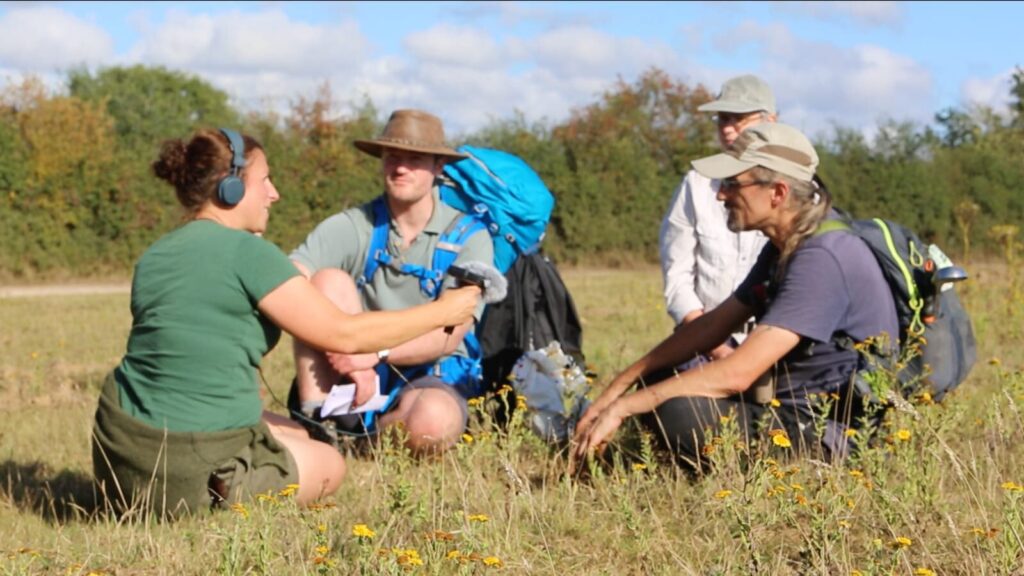
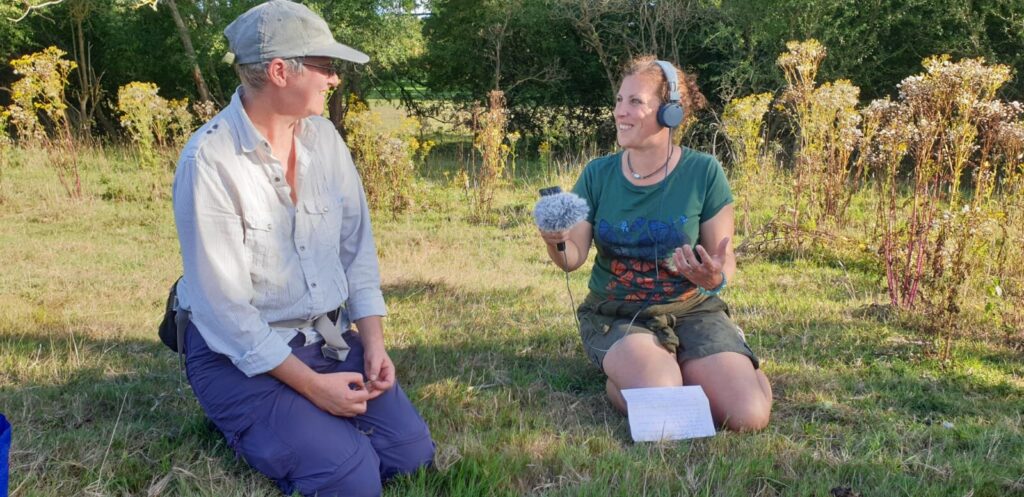
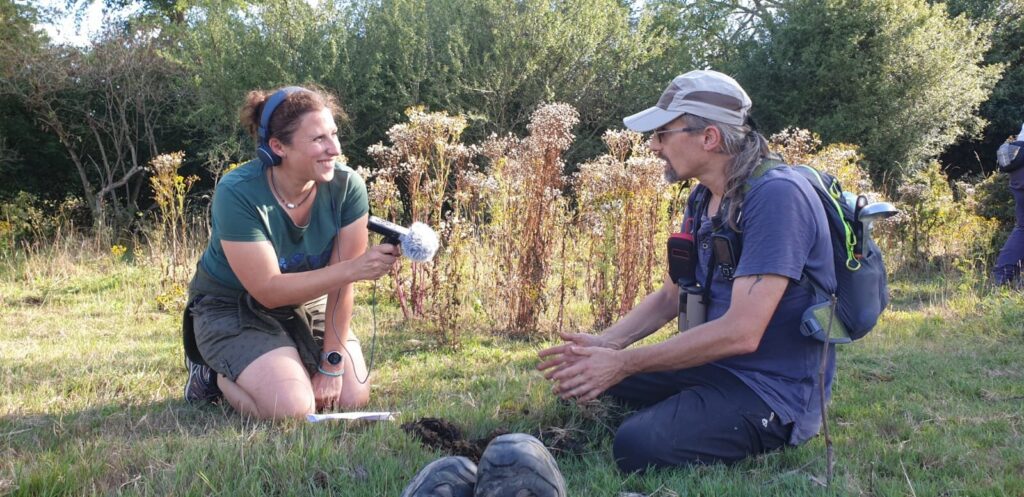
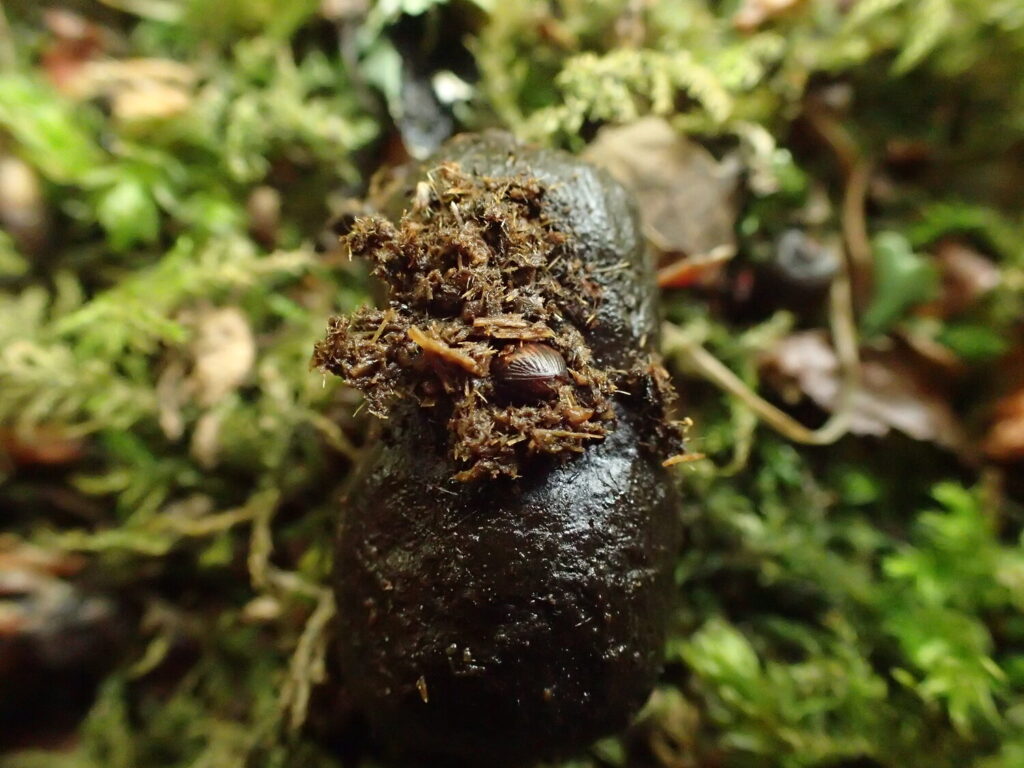
To keep up to date with dung beetle news check out the British Scarabs website
On Twitter you might enjoy following these guys:
Rob Howe @vet_rob
British Scarabs @BScarabs
Darren Mann @BlattaMann
Ceri Mann @Ceri_Watkins
This podcast wouldn’t have been possible without the support of some very talented people so many thanks go to: Lia Brazier for the beautiful artwork, Mat Davidson for the wonderful music and the fantastic Ian Bunn for his patient editing skills.
Podcast Episode 5: The Purple Emperor
In episode 5 we meet the ebullient Matthew Oates to talk about the inebriated and hedonistic life of His Imperial Majesty, the purple emperor. We talk about the life cycle of this magnificent butterfly, what we’re learning about them at Knepp Wildland, and how to go about spotting one yourself. Finally, and most importantly, we learn the origins of the not-so-ancient proverb “When tits are down, emperors are up!” Move over Confucius…



If you liked hearing from Matthew on this podcast then you might be interested in reading some of his books, of note his most recent works In Pursuit of Butterflies and His Imperial Majesty.
You might also enjoy his poetic presence on Twitter @MatthewOates76
Podcast Episode 4: The Reptile Tins
During episode four we delve in to the intriguing lives of reptiles and learn more about these fascinating animals at Knepp Wildland. I’m joined by my good friend, Ryan Greaves, who shares some remarkable reptile facts and encounters, and we find out what we can do for these captivating creatures in our gardens and in the wider landscape.
For more information about reptiles please check out the Amphibian & Reptile Conservation Trust.




Podcast Episode 3: The Bee Buckets
In our third episode we investigate a fascinating research project being carried out at Knepp Wildland, which is studying the social behaviour of the orange-legged furrow bee Halictus rubicundus.
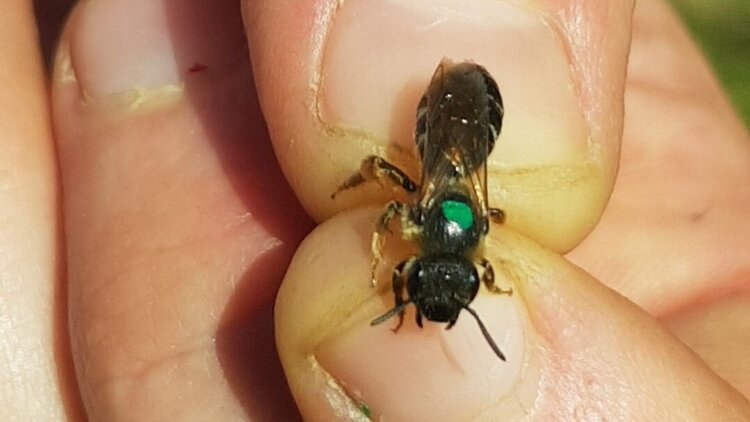

Dr Rebecca Boulton from the University of Exeter gives us an insight in to the intriguing lives of these little sweat bees, including tales of cheeky mating and sneaky eggs. This podcast takes a few unexpected twists and turns, and shows how this ‘plastic’ species may be able to adapt as the climate changes.
For more information about Becky and her studies you might like to follow her on Twitter @DrBecky_B and check out her wordpress page or her university profile page
For those of you intrigued to see what the tiger beetle larvae look like, Becky took a short video:
This podcast wouldn’t have been possible without the support of some very talented people so many thanks go to: Lia Brazier for the beautiful artwork, Mat Davidson for the wonderful music and the fantastic Ian Bunn for his patient editing skills.
Podcast Episode 2: The White Stork
In our second episode we explore the lives of the white storks nesting at Knepp Wildland which have featured on Springwatch this month.
The white stork (Ciconia ciconia) is a large charismatic bird that is the focus of a project to re-establish a breeding population in the south-east of England. Charlie Burrell, Knepp landowner; Lucy Groves, White Stork project officer; and Kirsty Richardson, stork volunteer, join us in this episode to share their enthusiasm for the project whilst we get up close to these beautiful birds on the nest and also in their enclosure.
Enjoy the sound of the storks bill clattering and fly with us as we carry out a nest monitoring drone flight.
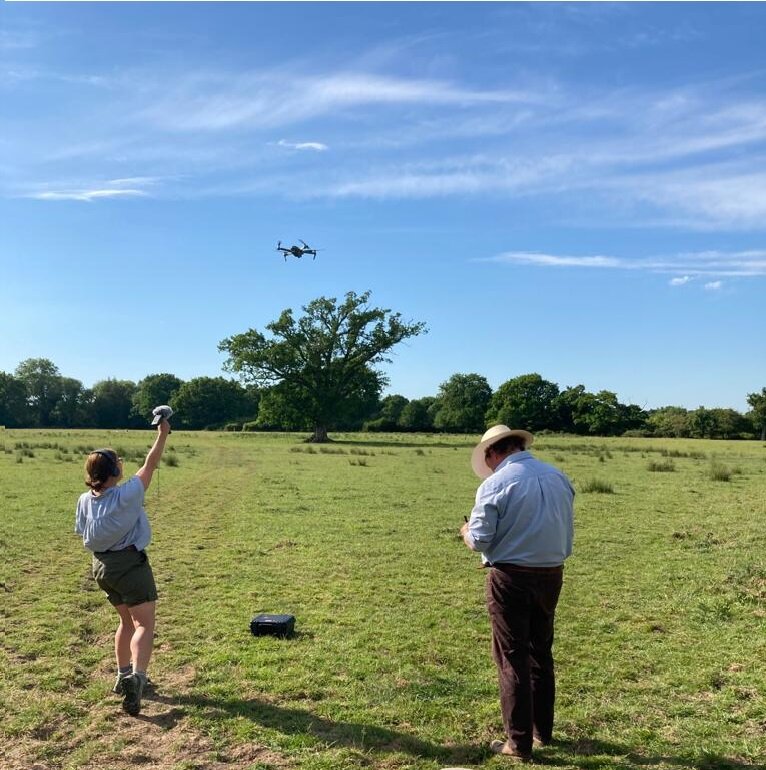
For more information about the project please visit the White Stork Project website or follow on Twitter @projectstork
And if you’d like to join in on a virtual white stork walk please go on our Knepp Wildland Safaris website to purchase your front row seats.
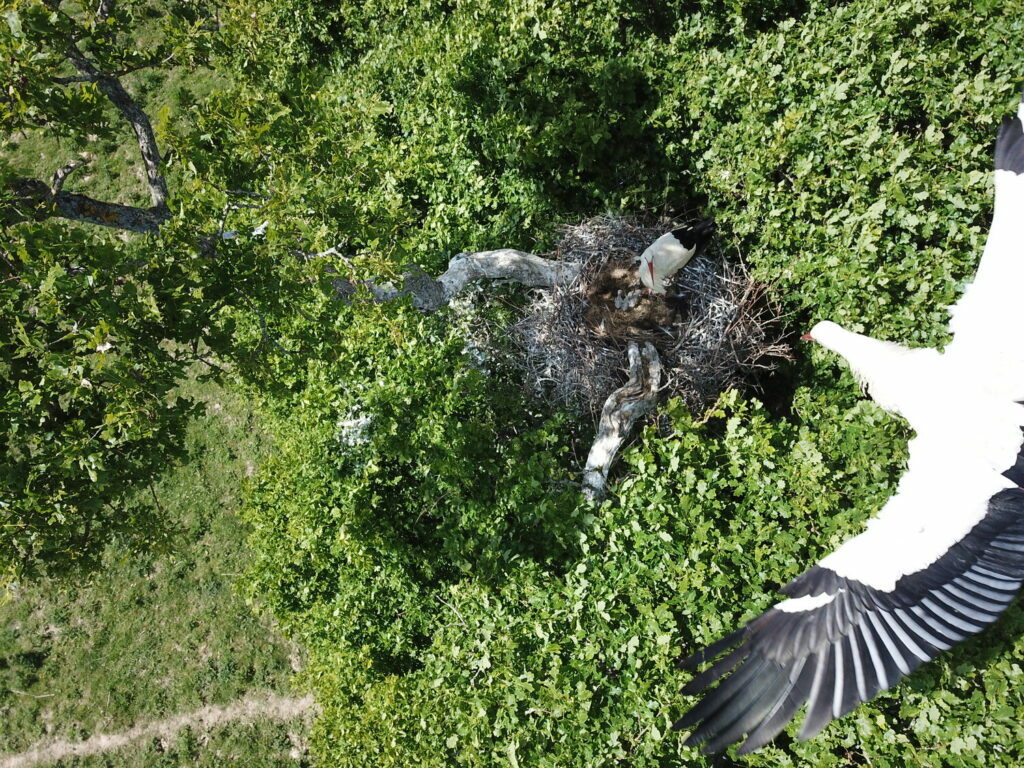
This podcast wouldn’t have been possible without the support of some very talented people so many thanks go to: Lia Brazier for the beautiful artwork, Mat Davidson for the wonderful music and the fantastic Ian Bunn for his patient editing skills.
Podcast Episode 1: The Nightingale
Our inaugural episode celebrates the return of the nightingale to Knepp Wildland this spring. The nightingale (Luscinia megarhynchos) has seen an impressive increase in numbers at Knepp Wildland since the beginning of the rewilding project, and 2020 has been a bumper year (although we didn’t know this at the time of recording!) with somewhere in the region of 30 singing males in the southern block of the project.
Sideshow Dave joins us on this episode as we talk about nightingales during our nocturnal and dawn surveys. We’re also fortunate enough to be joined by Tony Davis, lead bird ringer and nest-finding guru at Knepp to talk about the importance of finding and monitoring the nests of this elusive species.
We end with the most wonderfully pure nightingale solo from beneath a full moon.
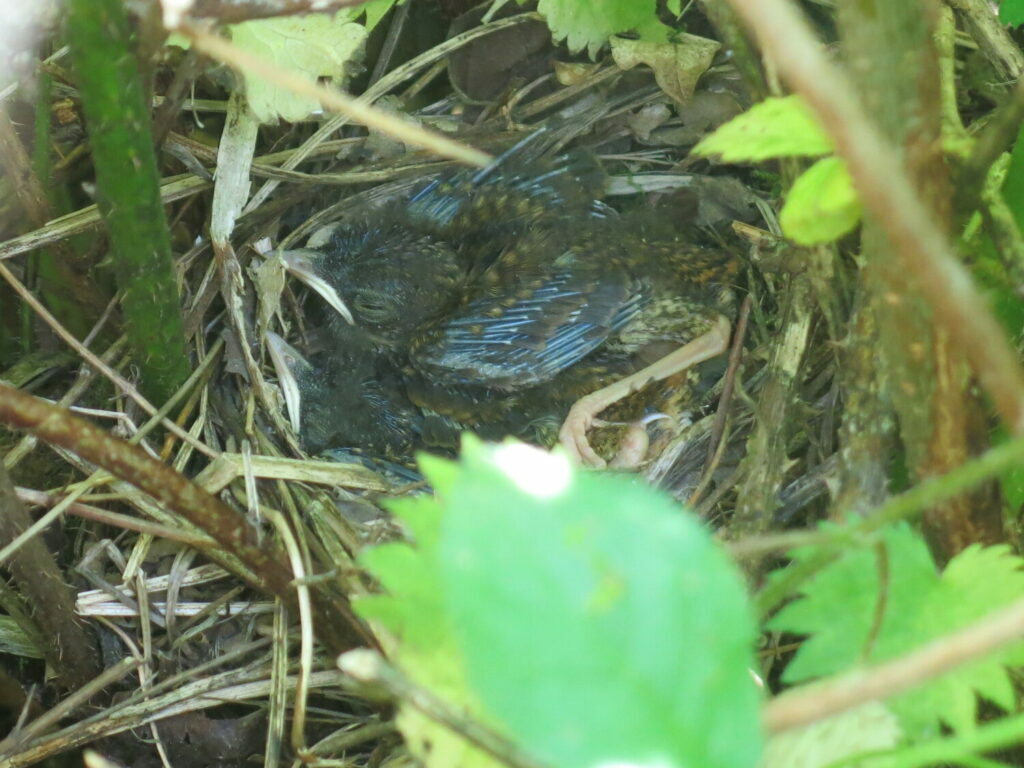
This podcast wouldn’t have been possible without the support of some very talented people who have kindly given their time and exceptional talent to help get this from egg to fledgling! Many thanks go to: Lia Brazier for the beautiful artwork, Mat Davidson for the wonderful music and Ian Bunn for his magnificent editing skills.
Please note that all bird ringing is carried out by people who have received official training and have permits from the British Trust for Ornithology. If you’re interested in learning more about bird ringing and what we’re learning from it please do visit the BTO website.
Both bird ringing and nest finding is carried out by following codes of conducts, where the welfare of the bird comes first. To learn more about the Nest Record Scheme please see here.





